
PHAT is an acronym from the initials of Portability, Headphone, class-A, and Tube. It represents our idealism catering to what audiophiles demand for music enjoyment in the era of mobility.
Headphone has been around for more than half century. There have been lots of breakthrough and milestones in headphone technology recently, followed by release of flagship models from mainstream brand names with unprecedented audio quality. needless to say models from audiophile oriented small to medium brands.
By leveraging the high performance headphones, Phatlab is determined to duplicate the experience of hi-end stereo performance in headphones and beyond through proprietary headphone amp technology.



Inherited from original Chimera, GT is equipped with both electron vacuum tube and solid-state JFET as major gain devices. Based on the groundbreaking topology, we further refined its performance by raising supply voltage to improve linearity and followed by a new bias circuit that easier to set an ideal operating point. Overall, we have a gain stage to preserve Chimera’s sound signature in a much wider range.
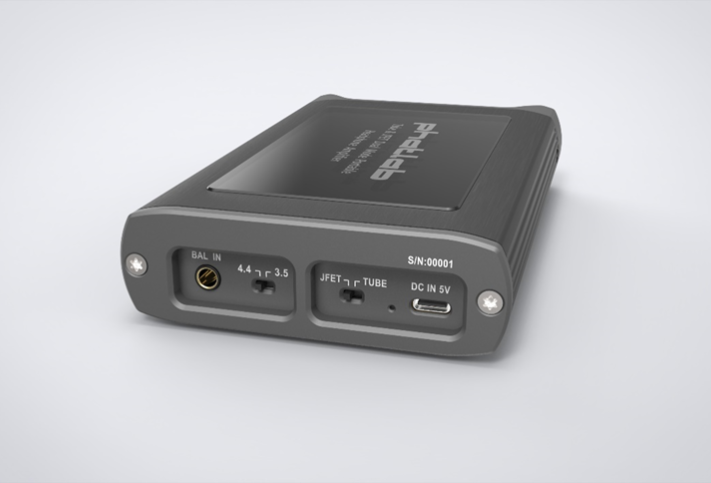
Thanks to the prevalence of balanced output in portable devices. It is easy to apply balanced transmission in many portable scenarios. Riding on the trend, we embed GT with a 4.4mm input jack. The jack itself is well thought out and complete, but the issue is that many cables has only 4 conductors without ground connection. It leads to improper signal level at receiving end. To cope with it, we devise an active buffer right at input for both 3.5mm and 4.4mm jacks. It helps restore the ground level and signal integrity at all situations and avoid the variation on output quality of DAPs and sources.
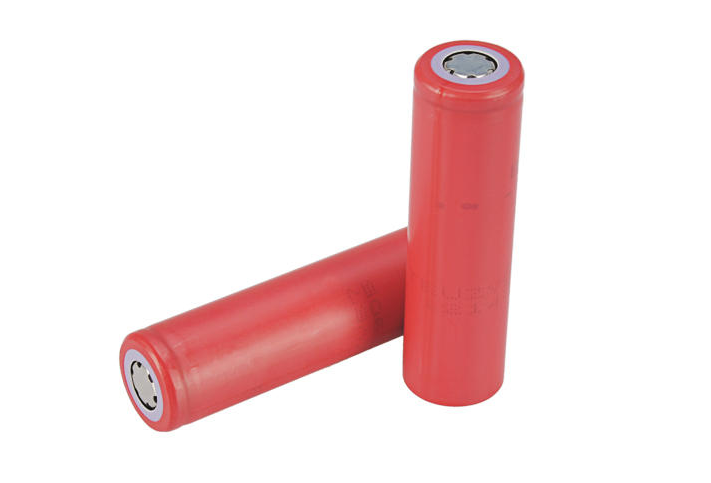
We are fully aware of users’ concern on limited cycle times of rechargeable battery. The adoption of 18650 cell has relieved the concern and increased the energy capacity of GT easily up to 2 times . Following the capacity increase, a USB type-C charging scheme is necessary for containing the charging time to a reasonable level. For over 1 amp constant charging current, we are able to fully charge the cell within 3 hours. And the whole amplifier system also benefits from the high current supply of 18650 cell to have quicker and powerful slam at highly dynamic music passage.
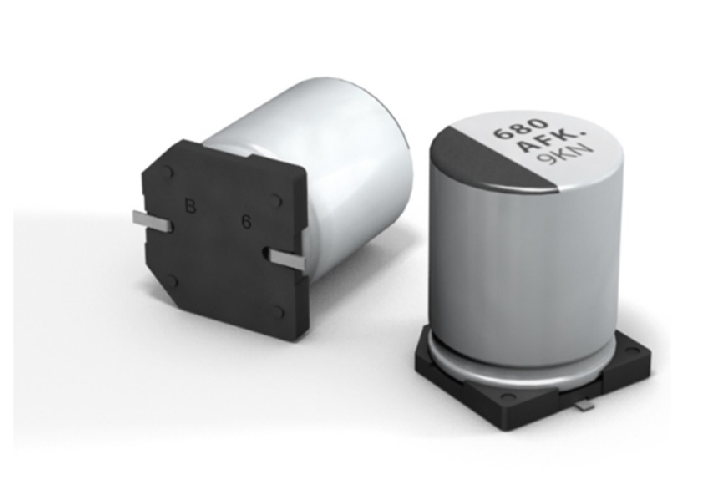
Music is highly dynamic signal. The ratio of maximum to minimum can easily reach 5 digits. It relies on a power supply that can support the instant demand within millisecond and last for the period of a big slam up to seconds. The key is a big enough power reservoir with low enough impedance to act quickly. If not quick enoygh, the nuance is lost. If not big enough, the slam is weak and short.
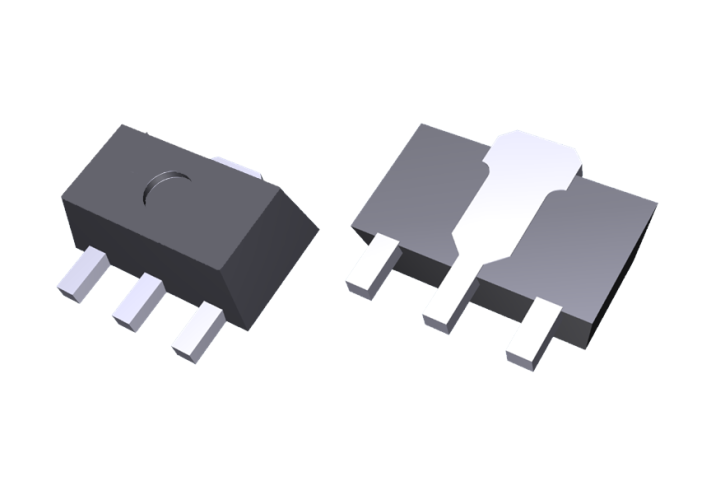
No matter how well an integrated circuit is designed, its output capability is limited by chip size. By using discrete power transistor in GT, it ensures plenty of driving current and thermal stability after intensive operations. The dilemma is we have to pack 4 sets of output stage for balanced outputs that takes up so many PCB space.
In the prevalence of IEMs, we certainly need only moderate power. Nonetheless, the discrete output stage inherited from Sassy GT will provides unprecedented energy for highly dynamic music passage under any circumstance.
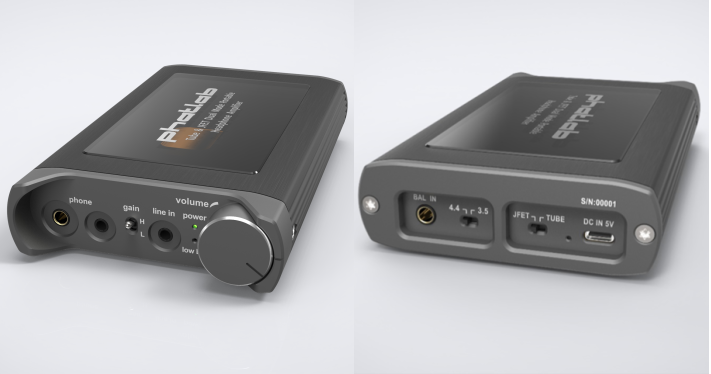
The way of music enjoyment is constantly evolving. All genres of music are streamed to every individual and played through ever refined gears. There are challenges to receive them flawlessly and empower the ear/headphones emitting beloved sound. Chimera GT is designed as a key role based on the concept. GT accepts both balanced and single-ended signals with minimal distortion. GT uses 18650 rechargeable cell lasting longer than any mobile or DAPs. And most important of all, GT is further refined on lively music performance with nuances and layers.
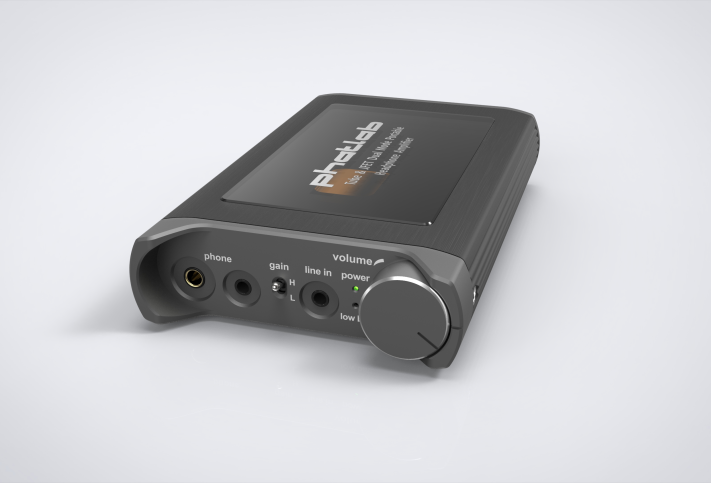
| Frequency response |
5 Hz – 60 kHz (+0/-3dB) |
|
Output power |
600 mW + 600 mW (3.5φ) |
| Headphone impedance |
15 ohm – 600 ohm |
| Gain Setting |
Hi: 9dB (3.5φ), 11dB (4.4φ) Lo: 0dB (3.5φ), 4dB (4.4φ) |
| Max. S/N Ratio |
>110 dB (high gain@3.5φ) |
| Power supply |
5V/2A (USB type-C port) |
| Operation time (on battery) |
> 20 hours |
| Charging time |
Approx. 3 hours |
| Dimensions |
94 x 30.5 x 149 mm |
| Net weight |
400 g |

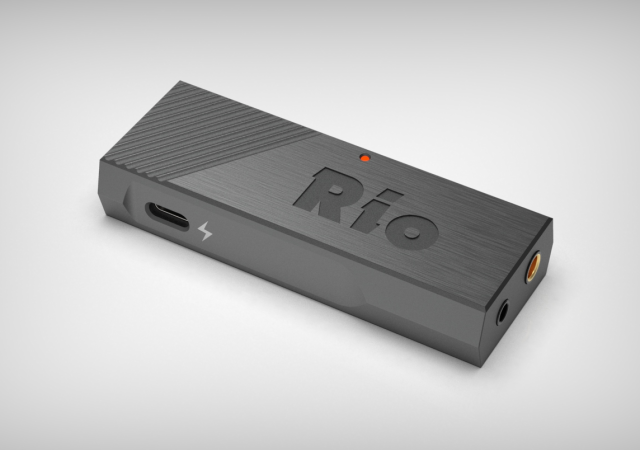
l Balanced output built with desktop level amplifiers
l 2nd USB-C connector for enhanced power supply and output power
l Large polymer capacitors for best transient and slam response
l Current feedback amplifier with widest bandwidth and least phase distortion
l Plays all 32bit/384kHz formats: PCM, DoP, DSD64, DSD128 and MQA
l Supports playback from iPhones, Android smartphones, Game console, MacOS and Windows computers
l Friendly physical volume control buttons
l Convenient Line-out mode as pure DAC source
l Elegant and stylish enclosure is made of solid aluminum with precise CNC milling and highest quality
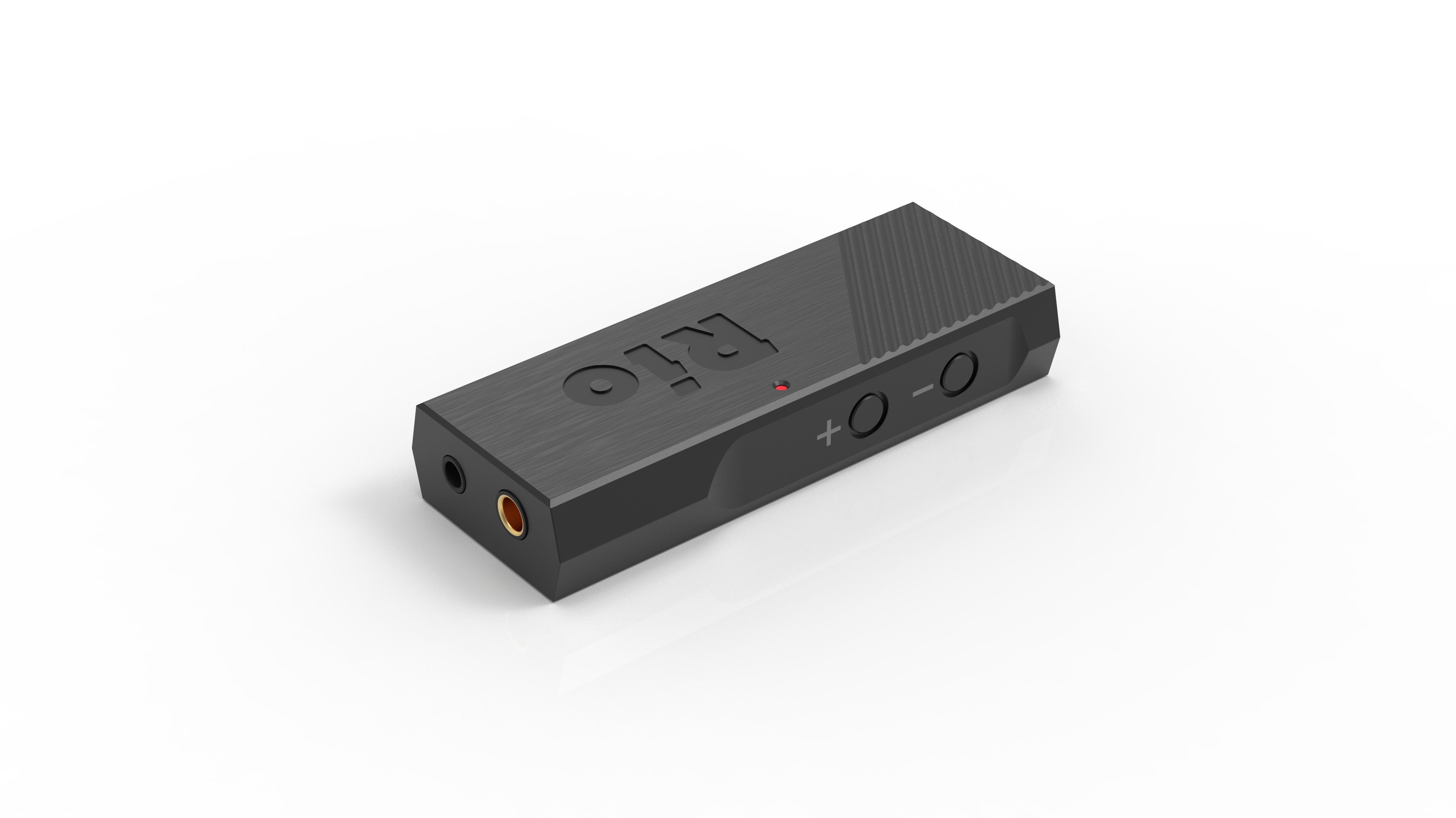
During the research of USB dongle project, we devoted to realize what is not fulfilled by products on the market. It is obvious no matter what is claimed they are all weak in output driver, limited by form factor and USB bus supply. Phatlab is determined to tackle the limits. Luckily, prior experience with RASA, a powerful desktop amplifier, has led us to experiment with same device on new topology. The achievement is worth all the efforts. Though the final rated power is subject to up limit of power supply, RIO delivers the same level of dynamics and transients as a desktop amplifier on the configuration.
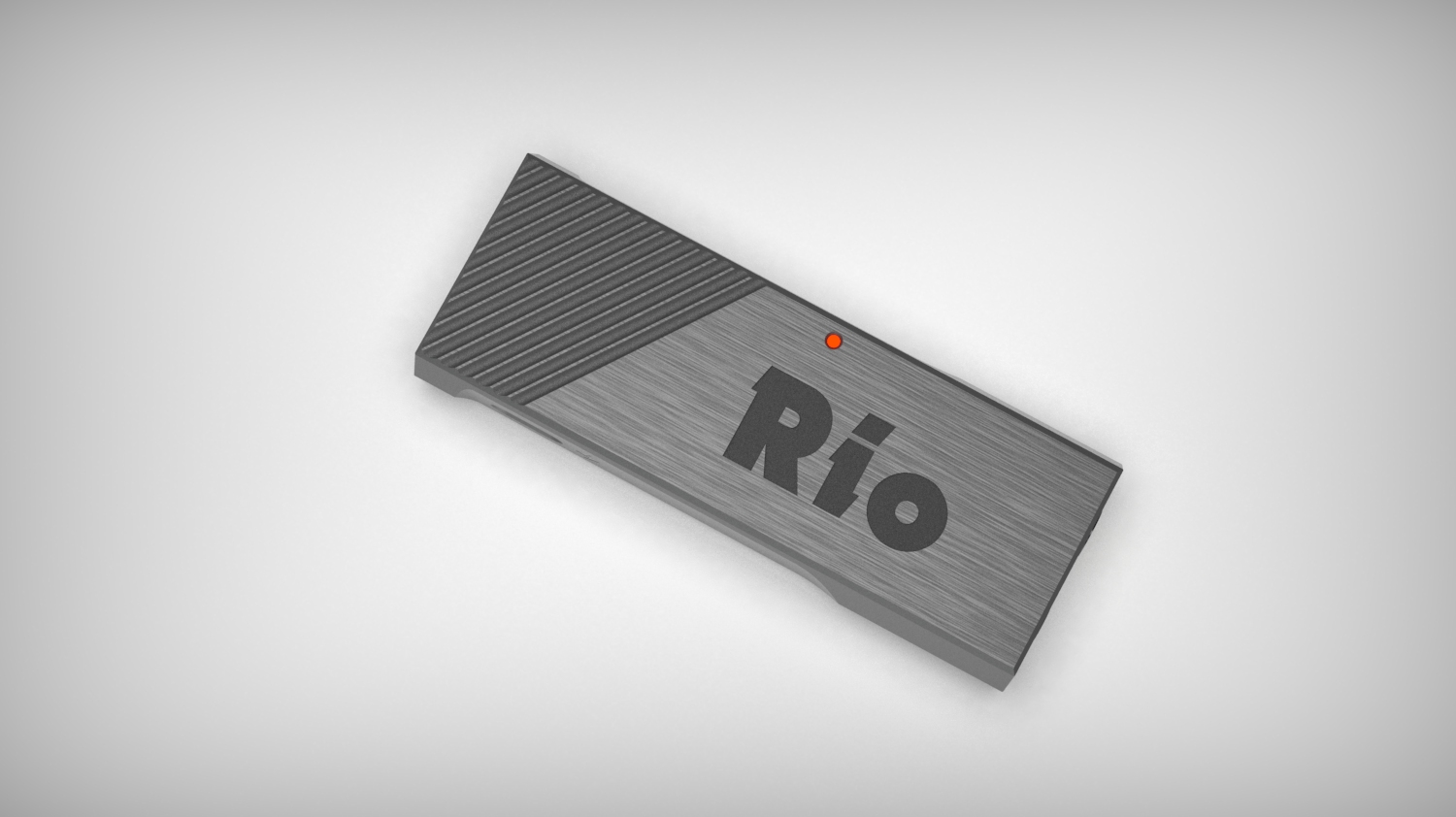
Power supply is always the weakest link in USB dongles for it drains the precious power from skinny mobile devices. Not only the scenario confine the output capability of amplifier, it also shorten the running hour of mobile devices, certainly lose-lose situation. A simple but smart move by adding another USB-C receptacle dedicated to external power supply tackles the dilemma of USB dongle. Behind the extra power jack, it takes engineering wisdom to auto switch between alternative supplies without blackout on USB connectivity or music playback.
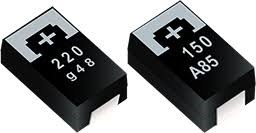
A large capacitor with lowest impedance across wide bandwidth is key to quality of power supply. In RIO, high capacity conductive polymer tantalum capacitors are adopted at USB injection and supplies of power amplifier ensuring in-time response to most dynamic music passage. USB dongles always adopt smallest parts fitting in minimal dimension. It is fine for a digital USB disk but definitely worsen the audio performance. Rising temperature is a big enemy to analog circuitry, it leads to instability and inferior operation. One size smaller resistor has only 1/4 power rating than bigger one. It means the smaller resistor runs hotter sooner and generate more noise. That is why we choose big resistor whenever possible. The performance of RIO is highly assured on circuit stability and quality of power supply.
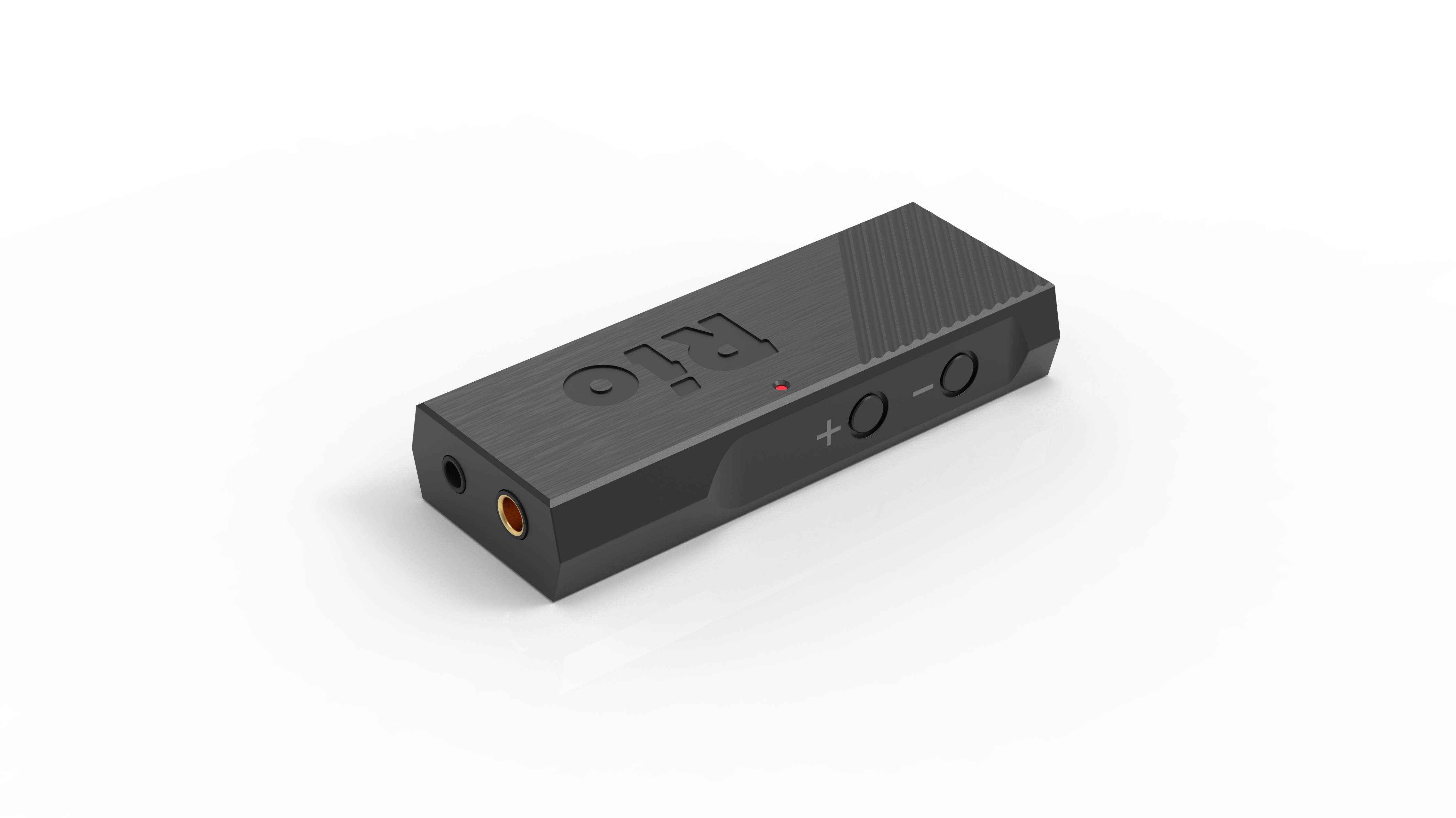
It is often exercised to streamline a USB dongle in every aspects from dimension to control interface. However, it is counterintuitive in operation or worse, deterioration in sound quality. RIO is equipped with physical volume control interface and fix host device at maximum volume. By this configuration, we can avoid the digital volume control of host device and maintain best S/N ratio through 32-bit volume control in DAC. Volume level is easily identified through a single LED from red, green, blue, up to white related to color spectrum low (volume) to high (volume). A line-out mode uses RIO as pure DAC source is hassle-free by holding Vol+ button while plug into host.
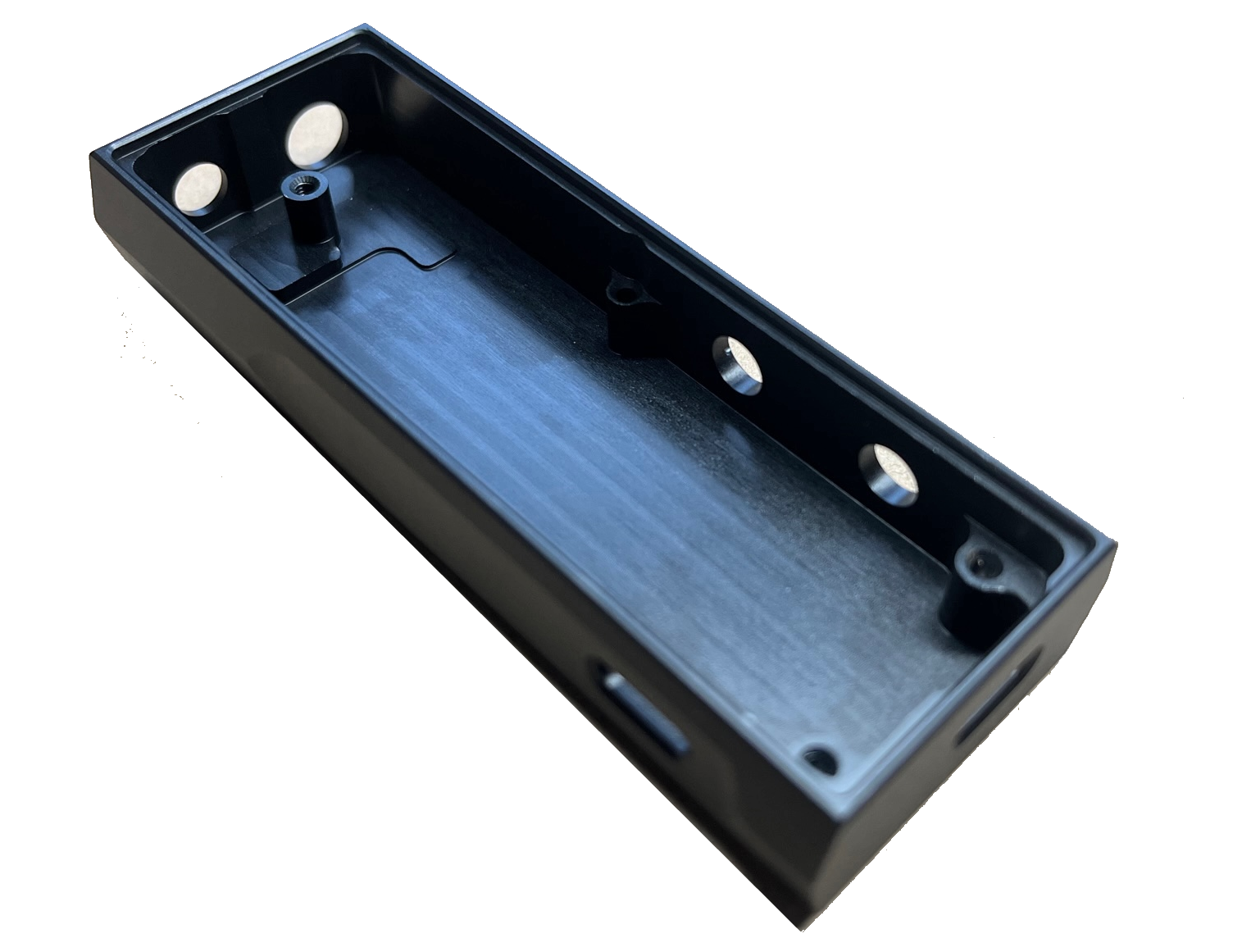
The enclosure of RIO is designed with elegant style while fulfilling functionality well. It is milled from a solid mass of aluminum with highest rigidity and robustness. Upon the solid core the finish is carefully sanded, polished and ionized to highest standard. Though there are stylish edges and curves, users can feel smooth and handy. It is well recognized the chassis of audio equipment is foundation of performance. Phatlab keep the belief in a small USB dongle too. The RIO is a beloved master piece in hands and has the most solid construction supporting top-notched electronics.

RIO includes MQA Renderer technology, which can connect to an MQA Core signal and complete the final unfold of an MQA file. The RIO LED glows magenta to indicate that the unit is rendering an MQA stream or file. This delivers the final unfold of the MQA file.
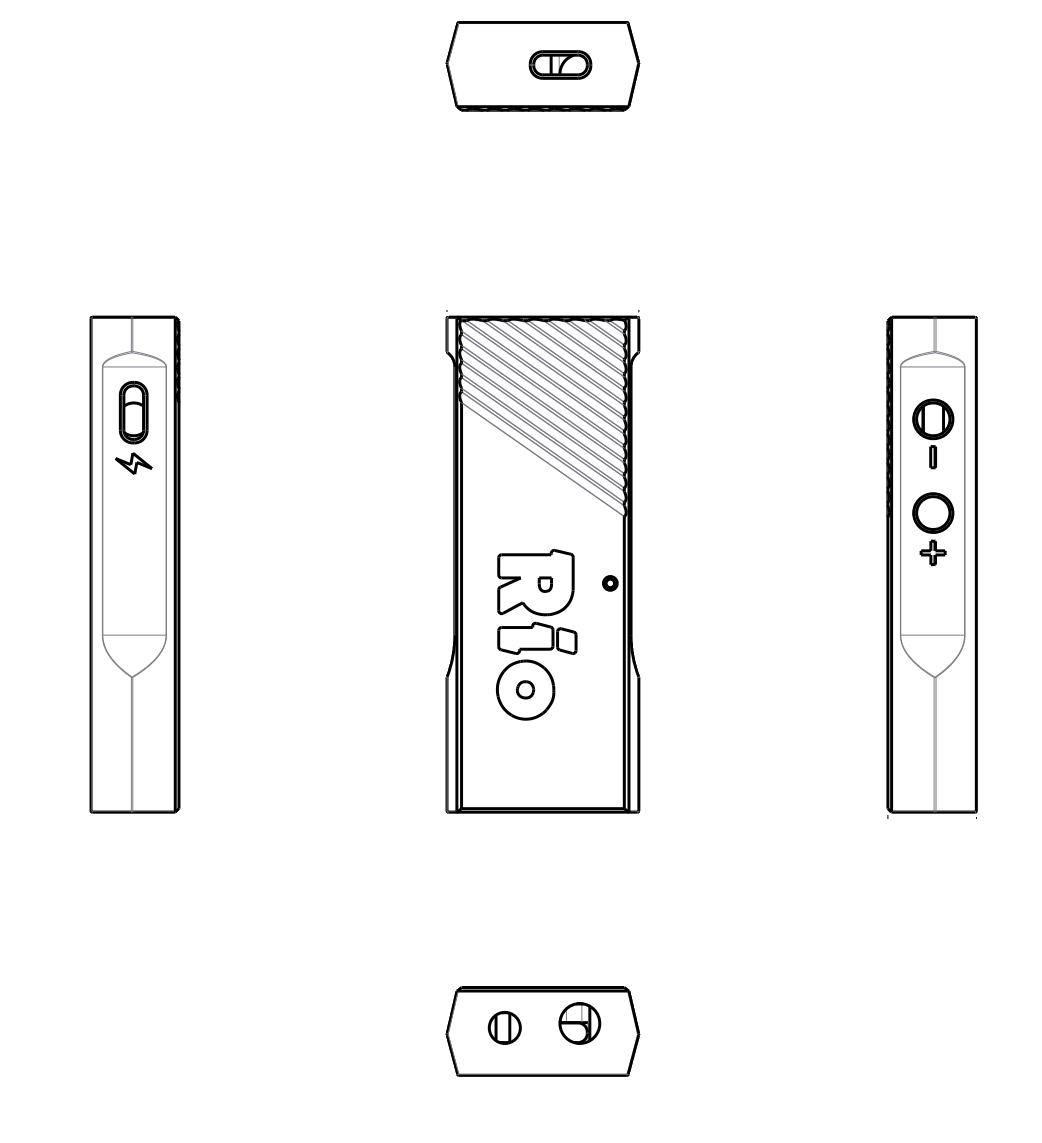
| Input |
1st USB C (device) 2nd USB C (5V power only) |
| Output power (4.4φ) |
2.0 Vrms |
| Output power (3.5φ) |
1.0 Vrms |
| Headphone impedance |
16 - 600 ohm |
| Audio formats |
PCM: up to 384 kHz MQA renderer: up to 384 kHz DSD: 64/128 DoP |
| Power supply |
5V/1A |
| Dimensions (WxHxL) |
85 x 15.2 x 32.5 mm |
| Net weight |
57 gram |

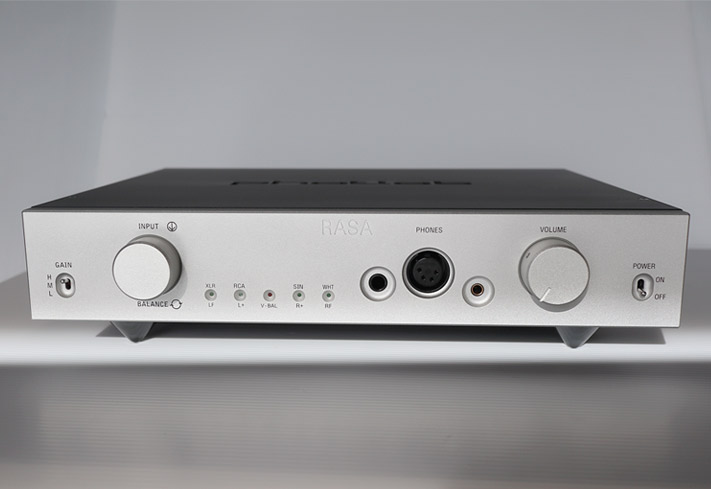
In development of RASA, we devoted to realize the performance of Phantom, Phatlab’s preceding flagship tube amplifier, in a solid-state replicate. Though the component counts of RASA seems multiple times of tube amp, it actually comprises 3-stage structure, first the input buffer and conversion stage to take advantage of fully balanced construction, second the zero negative feedback gain stage for coherent sound quality, and third the powerful output stage to cope with all kinds of loading. The major difference from Phantom might be in the directly-coupled output of RASA instead of transformer coupled output in Phantom. Apart from the similar characteristics like clarity, details, and spaciousness, RASA is more straightforward and Phantom is otherwise implicit by nature.
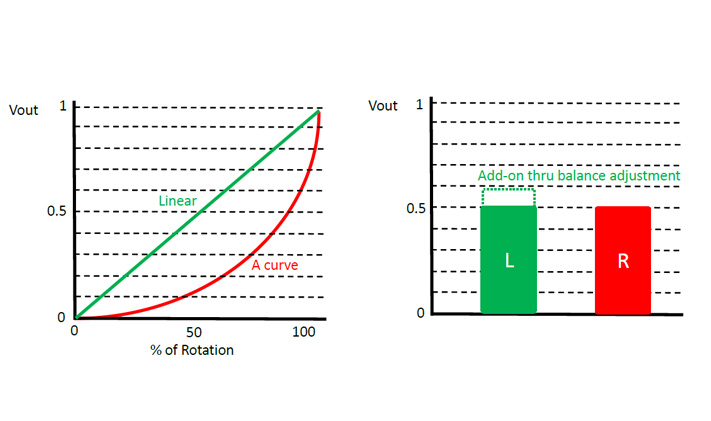
The precision and match of multi-channel volume control is critical to balanced amplifier’s performance. The imbalance of volume between positive and negative polarities may lead to downgrade in signal integrity. A traditional 2-gang potentiometer has typical 10 to 20% tolerance between gangs, needless to say 4-gang counterpart used in fully balanced construction. The volume control of RASA is a refined and improved version from Phantom. It consists of 4 resistor ladders for positive and negative polarities of individual channel and up to 1024-step resolution. Besides, the volume knob emulates type-A transfer curve that is linear to human hearing. The volume control brings the best linearity and details even in its minimal level. Moreover, L-R volume balance (offset) adjustment is a long forgotten function in Hi-Fi system. The reason is its deterioration to audio quality from multiple interconnection of potentiometers in traditional design. By adopting digitally controlled resistor ladders, we are able to bring back the L-R channel balance adjustment with zero impact to sound quality.
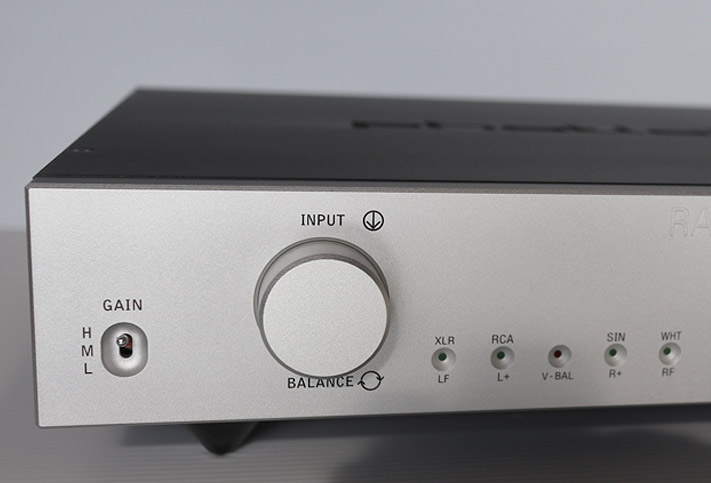
The wide spread of headphones’ sensitivity is always a challenge to modern amplifier design. It demands for both low noise floor and high output power, which usually in conflict with each other. In RASA, the 3-level (-6/0/+9 dB) gain stage brings user both the lowest noise level and highest power output through a simple toggle switch. The unique design of gain stage avoids the side-effect of gain setting through amplifier’s feedback resistor, which usually changes the transient characteristic of amplifier in subjective perception. In RASA, its audio quality is consistent in different gain level and well compatible with IEMs up to planar headphones.
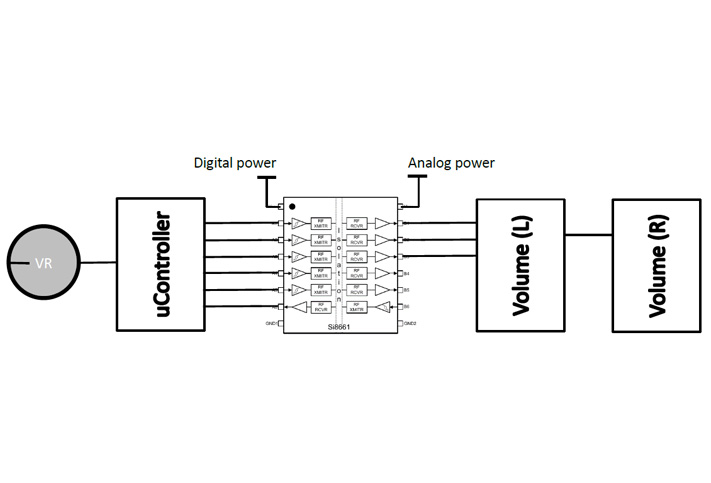
RASA is equipped with a micro controller. It takes programming to fully exploit the potential of integrated devices. We used to avoid digital control in amplifier for its potential switching noise. So we take full precaution to integrate controller in the system. It includes a dedicated power supply starting from transformer, isolated PCB layout, and digital isolator. There is absolute no electricity flowing between digital and analog blocks and no trace of digital noise either through measurement or auditioning.
Except for doing control, we apply the controller for signal generator that can output 1000Hz sine wave and white noise, all based on DDS (direct digital synthesis) technology. It is convenient for users to apply the generated signals through highest quality amplifier for extensive headphones break-in.
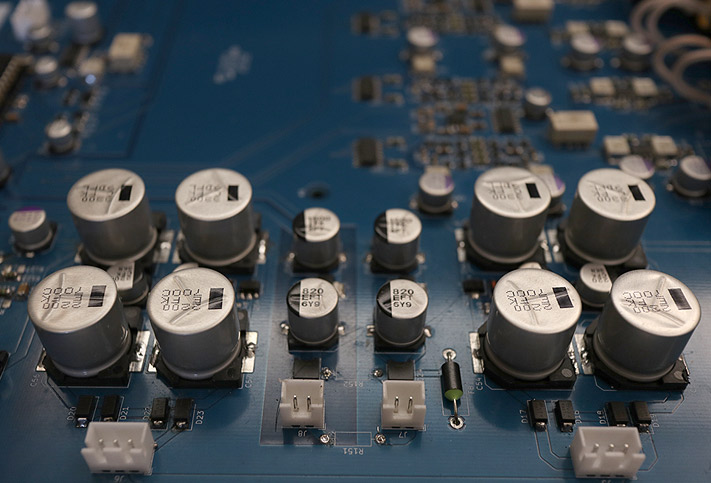
As always, we only apply carefully selected components for audio quality and reliability. The Germany made MELF resistors are used through the entire board for their low noise, smoothness, and reliability. SMD film capacitors are located right next to amplifier’s supply for coherent frequency response. Low impedance high capacity electrolytic capacitors are main power reservoirs for supply in highly dynamic music passage. And polymer capacitors are last mile in power supply for extensive high frequency performance. Cost is no object in design and component options. Industry standard Pentaconn® and Neutrik® connectors are used for output connections.
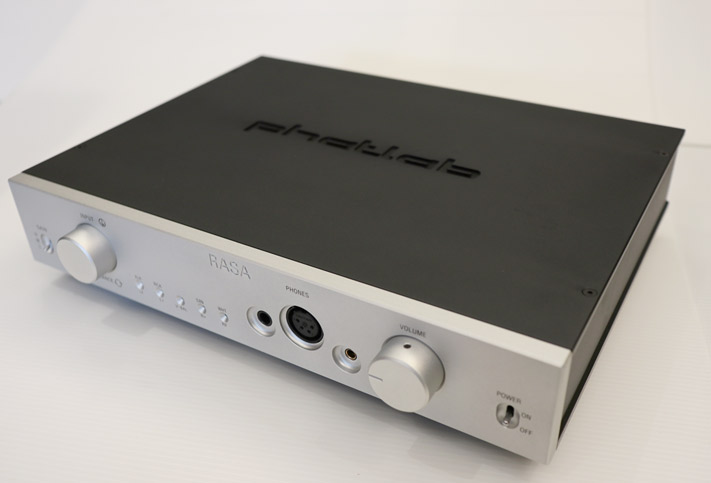
It is well recognized the chassis and enclosure of audio equipment are foundation of superior performance. The enclosure design of RASA is directly derived from flagship Phantom and carefully trimming in dimension and weight. RASA’s enclosure is elegant and compact sitting on desktop and has the most solid construction with aerodynamic aluminum supporting top-notched electronics.
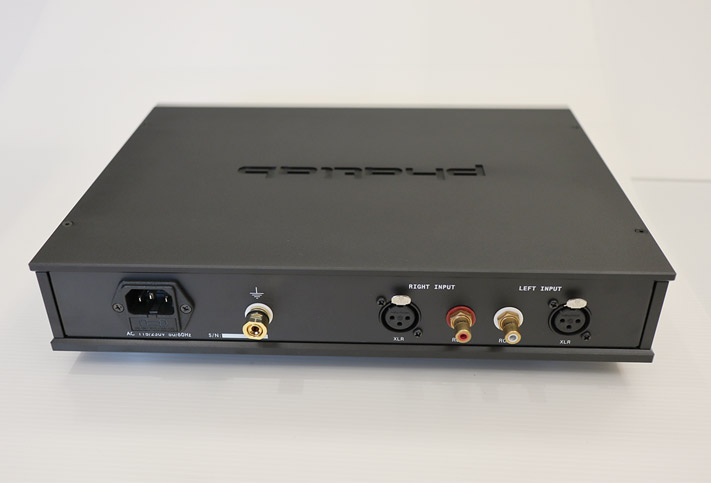
Single gain stage, zero global feedback, high resolution stepping volume system, current mode preamplifier, and high current output stage are unique features behind RASA’s prestigious performance. RASA’s electronics has borrowed the wisdom of tube amplifier. It combines the neat tube-like topology with sophisticated solid-state functionality. There is no artificial details or sharpness that prevails latest solid-state design. RASA presents music coherently and fluently without a trace of obtrusion. The music sounds rich and touching found in tube amp while driving demanding headphone as powerful as a solid-state amplifier.
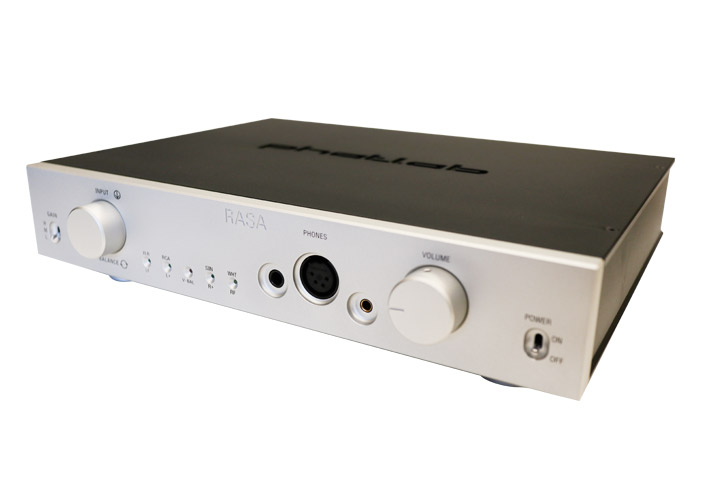
| Frequency Response |
1 Hz – 100 kHz (+0/-0.1 dB) |
| Output power (4.4φ) |
600mW + 600mW (300 ohm) |
| Headphone impedance |
16 ohm – 600 ohm (recommended) |
| Gain level |
H: +9dB (SE), +15dB (Balanced) |
| Max. S/N Ratio |
>110 dB |
| Power supply |
115/230V (AC) |
| Dimensions (WxHxL) |
330 x 77 x 275 mm |
| Net weight |
5030 g |

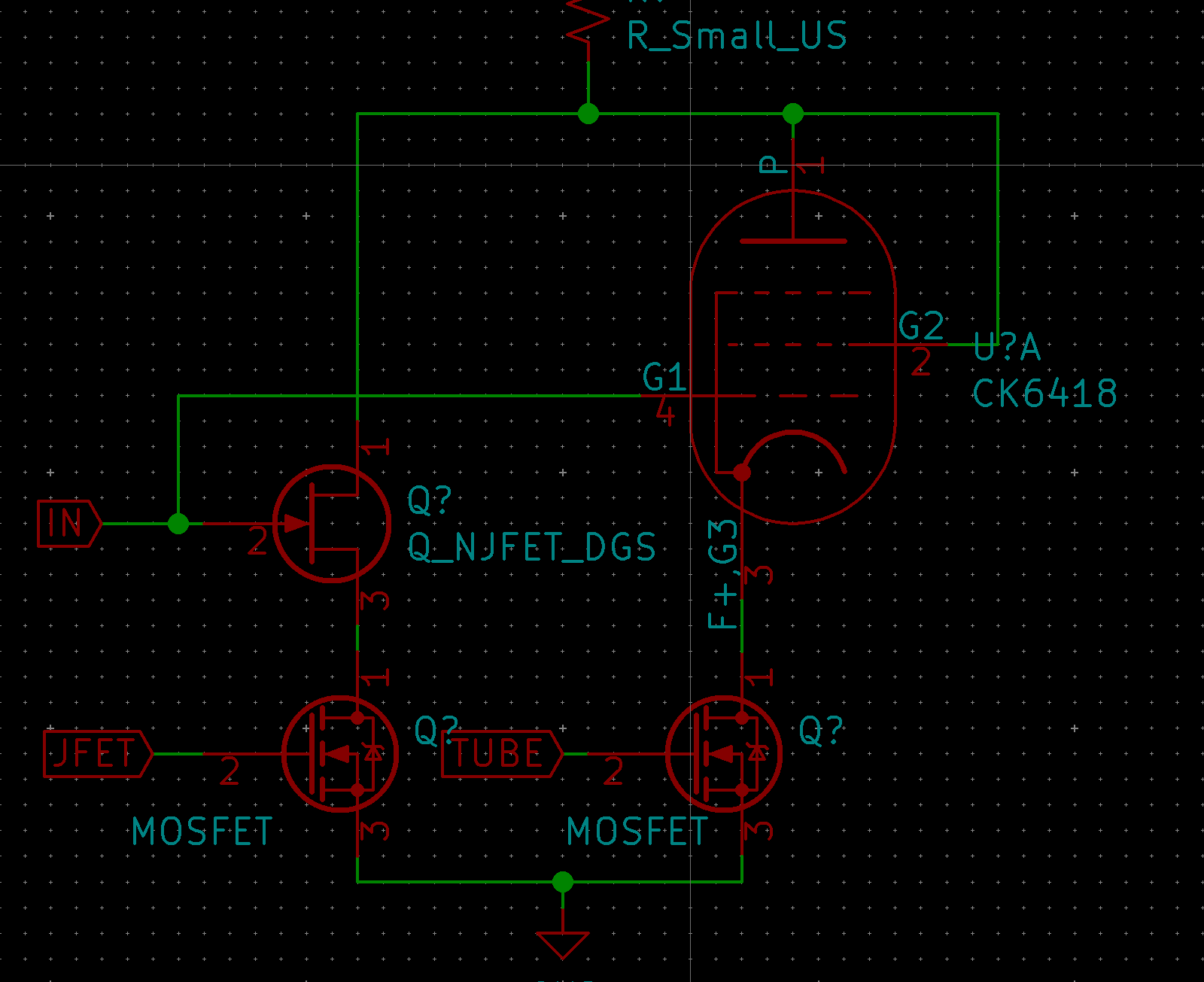
For the first time, a portable amplifier is equipped with both electron tube and solid-state JFET as major gain devices. Instead of remove and replace process, either device is activated through a simple toggle switch and into action immediately. It is achieved through an innovative circuit topology to embed both devices exactly in the same location of signal path. When switching between JFET and Tube, it is easy to tell the difference between the two. Tube brings a smoother and emotional touch in the music, while JFET is more pronounced and powerful in each note. It is all up to user’s taste and scenario to choose from. And Chimera is named after its dual (tube and JFET) characteristics in one chassis.
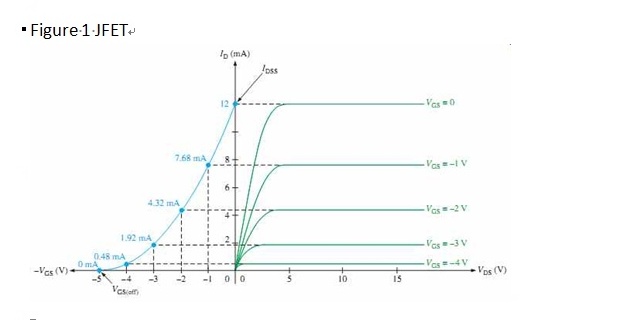
JFET is well known for its high resemblance to pentode electron tube both are voltage controlled gain device and with similar transfer curve. Though pentode is not as beloved as triode by audiophiles. It is actually a more linear device that introduces less distortion in amplification.
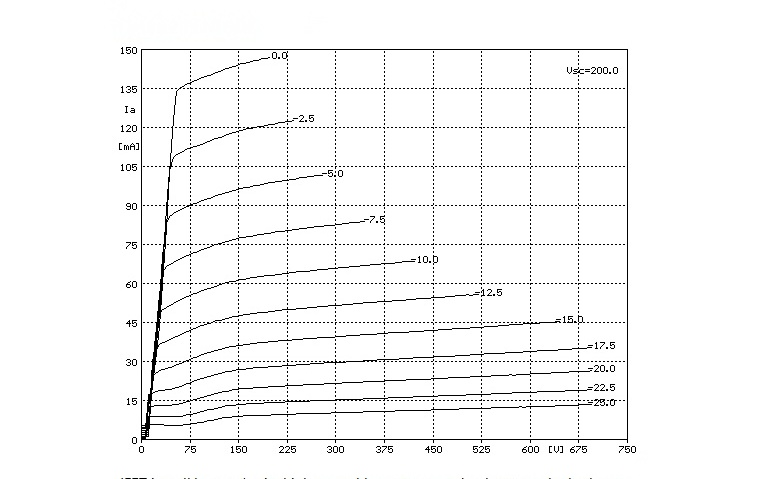
JFET mode may not sounds as sensational as tube mode in the beginning. It still presents a warm and smooth sound in a more straightforward characteristics, which may be more appropriate in certain music genre. Audiophiles are encouraged to try JFET more often to dig out its potential for diversified music selections.
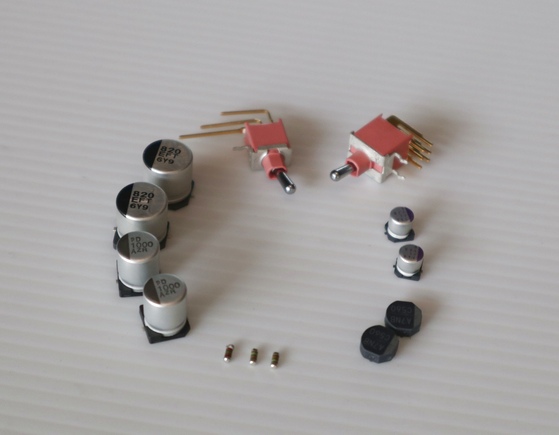
All passive components are selected for best audio quality. The extensive application of MELF resistors from Vishay in signal path is high power SMT counterpart of through-hole resistor for their smooth and low noise characteristics. The main power supply filtering capacity is directly inherited from Sassy GT for proven performance. The tube’s filament supply is bypassed with OSCON™ cap for extensive frequency response comparable to film cap while has electrolytic capacity. The output stage is supported by multiple organic polymer capacitors right next to supply pins. This technique reinforces the stability of power under stressful music passage at output stage. The result is uncompromised sound image and frequency response at both ends all the time.
The rigid chassis is made of solid aluminum and crafted to extreme precision with CNC machinery. Only high quality material and stainless screws are used in its assembly without compromise.
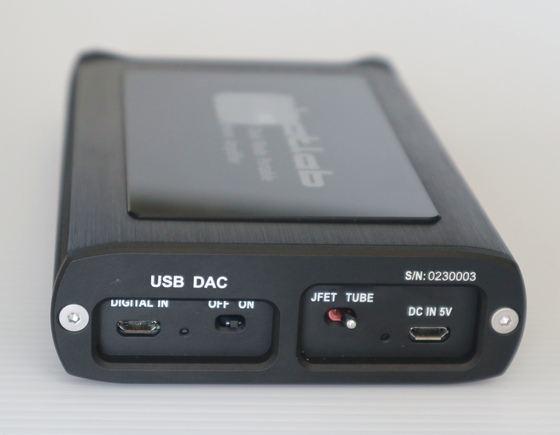
A high performance USB DAC is optional in Chimera for users’ convenience. Although there are plenty of high quality DAP and standalone DAC to choose from, users still expect to use PC or mobile as music source without compromise on quality of digital conversion from time to time. And Chimera D is the choice. ESS9028 is the core of DAC module and USB receiver is selected for widest compatibility and low power consumption. The USB DAC is plug and play with iOS™ and Android™ devices with no need of device driver. This combo delivers solid performance electrically with less than 0.0004% THD+N and surprising spacious sound.
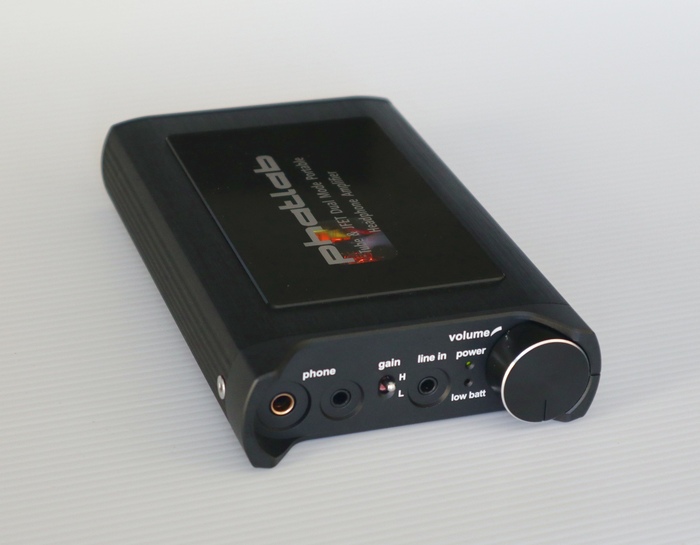
The improvement of Chimera is far more than functional change. The new output structure and physical implementation delivers a much lower noise floor. All the switches are outside signal path to eliminate potential downgrade on signal quality and soft switching scheme is adopted to reduce switching noise. The power efficiency is also improved by 30% for much less consumption in amplifier alone. The power reservoir is enhanced to same level as Sassy GT for most demanding music passage. And a new output stage is capable of dealing with heaviest load. Yet the phenomenal sound quality is well preserved without compromise.
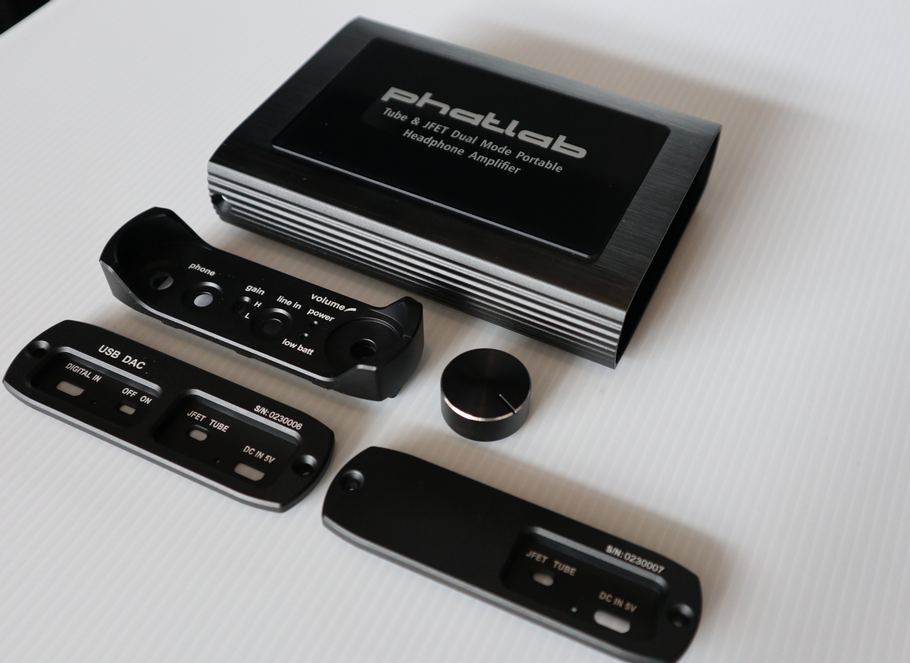
Everyone familiar with Phatlab shall easily tell the origin of Chimera from Sassy. Chimera does inherit all the advantages of Sassy GT and beyond. By adopting a new architecture, Chimera is capable of delivering 500 mA in each channel with output impedance less than 0.1 ohm and bandwidth beyond 100 kHz. Chimera can serve IEMs with complex drivers and crossover combination all the way up to planar headphones whopping over thousands of mW. Chimera is one of a kind amplifier enabling the mobility of all kinds of phones.
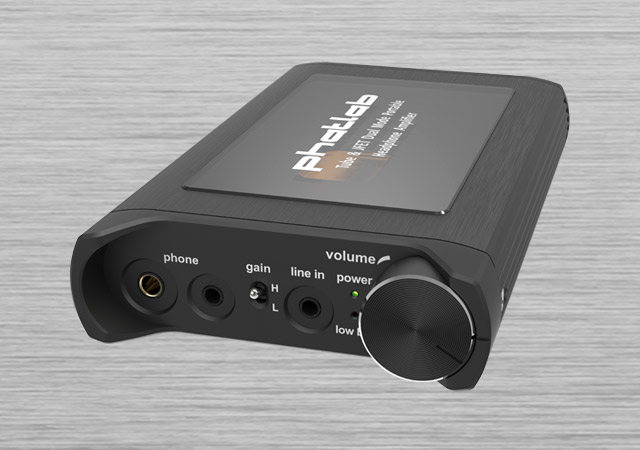
Even without increasing battery capacity, the Chimera has gain 1.5 times of operating hours over Sassy GT. We are proud to say Chimera has surpassed its predecessors in every aspect with comprehensive design and broadest compatibility.
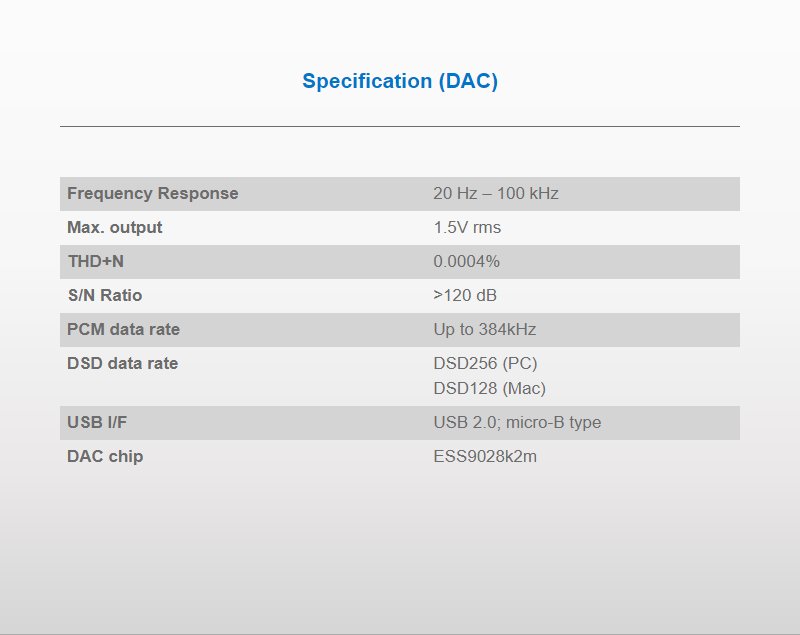
| Frequency Response |
10 Hz – 100 kHz |
| Output power (30 ohm) |
300 mW + 300 mW (3.5φ) 1000 mW + 1000 mW (4.4φ) |
| Headphone impedance |
30 ohm – 600 ohm |
| Gain Setting |
Hi: 14dB (3.5φ), 20dB (4.4φ) Lo: 6dB (3.5φ), 12dB (4.4φ) |
| Max. S/N Ratio |
>110 dB |
| Power supply |
5V/1A via micro USB port |
| Operation time (on battery) |
> 10 hours (amp alone) ~ 5 hours (amp + DAC) |
| Charging time (>1A supply) |
Approx. 3 hours |
| Dimensions |
94 x 30.5 x 149 mm |
| Net weight |
370 / 378 (D) g |

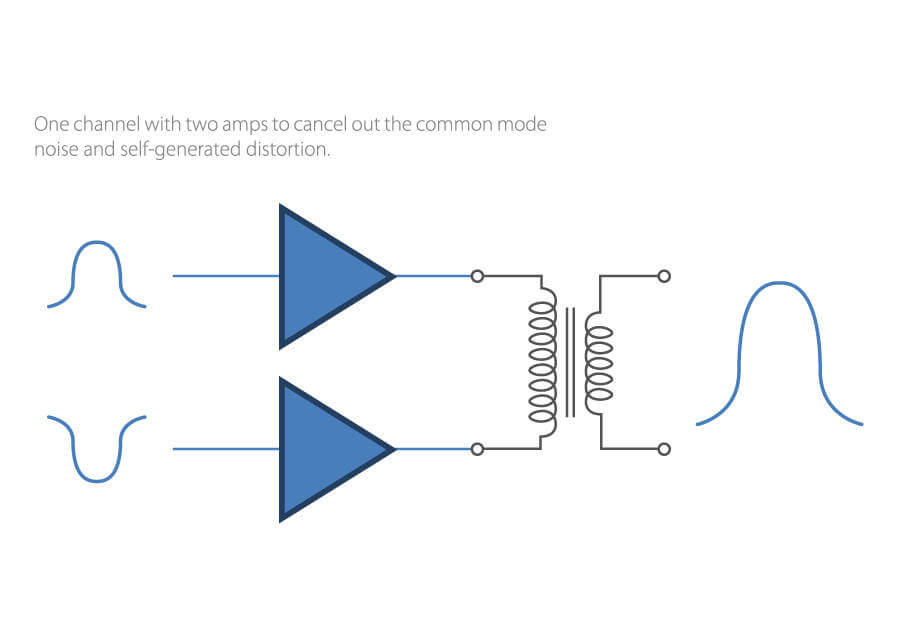
There is nothing like Phantom from design concept to practical implementation. Apart from our portable products, Phantom gains the benefit of unlimited power supply and spacious enclosure to include whatever ideally suited audio performance. The first idea came to our mind is a full-balanced topology. Not catering to market hype for balanced amplifier, but to leverage the advantage of balanced topology leading to ultimate sound quality. Instead of a balanced to single-ended conversion at input and a single-ended to balanced conversion at output, we apply a much tedious and costly four-amplifier scheme for a true balanced stereo amplifiers. The decision follows by many design challenges when we determined to make it as ideally as we planned.
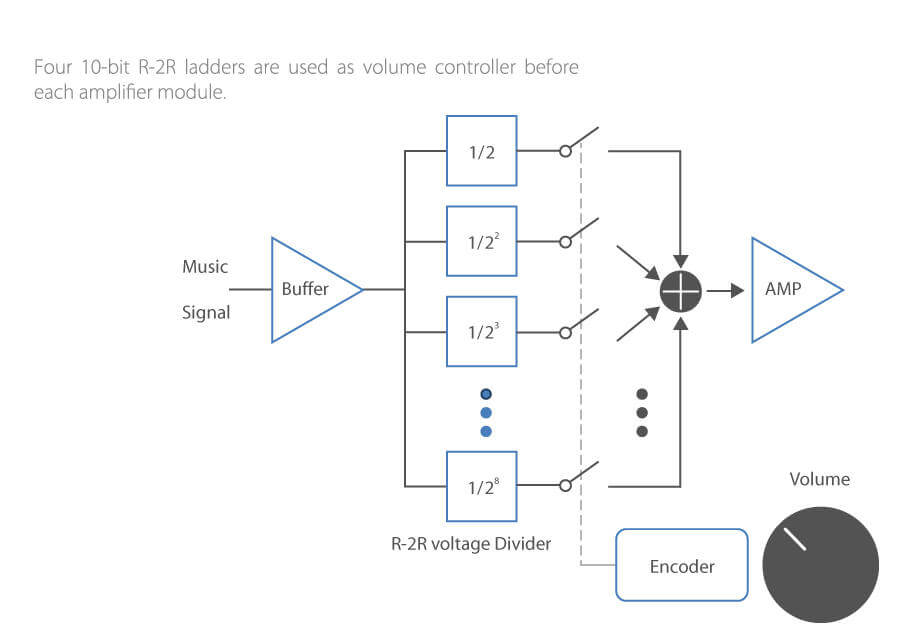
The first challenge is how to make a 4-channel volume control with minimum tolerance. In a single-ended counterpart, a two-channel volume potentiometer with 10% tolerance is widely accepted, even though we usually found imbalance at low volume level between channels. However, using a 4-gang potentiometer in a balanced design, the huge tolerance may easily deteriorate the advantage we gain from balanced topology. One simple fact is the common mode rejection is seriously degraded by as much as the tolerance between gangs.
We use R-2R resistor ladders as volume control unit for zero tolerance between channels. The signal path is true analog with digital interface, so there is no signal imbalance among them. And the user interface is thoughtfully maintained the analog touch. The volume control is almost zero tolerance, high resolution even at lowest volume level and intuitive as traditional potentiometer.
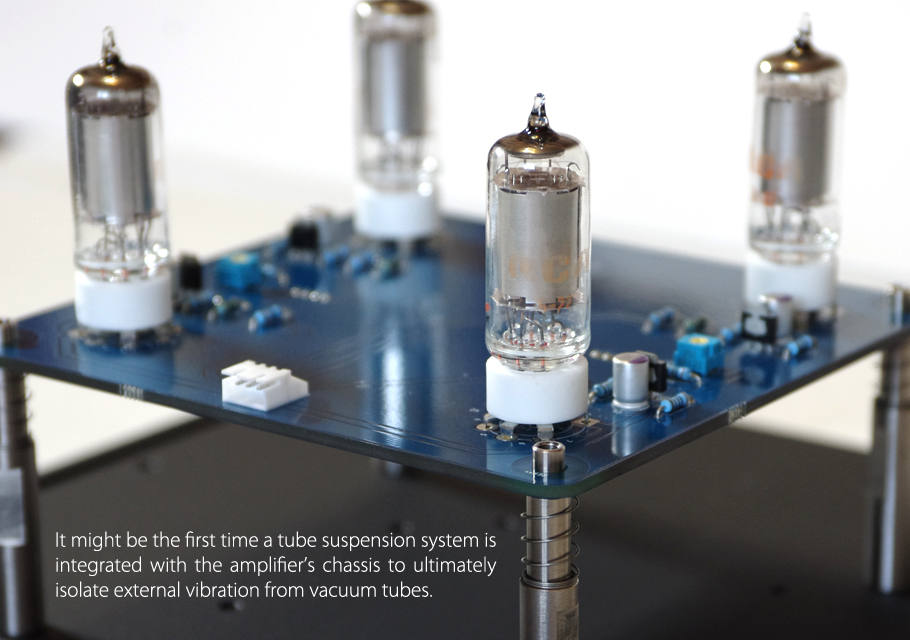
We have gained many experiences from portable amplifiers and well aware of the vulnerability of directly-heated tube (DHT) to vibration. By leveraging the luxury of enclosure space. There are several directions to stabilize the chassis and isolate vibration from tubes. One is an extremely solid and heft enclosure, though an 10kg+ chassis may beyond anyone's expectation for a headphone amp. And second is independently suspended tube module. Through delicate mechanical design, the chassis is not just heavy but also as solid as machined from a single metallic brick. Every plate is machined from 10mm solid aluminum and faceplate is over 20mm. Four especially design pillars are used to support tube sub-assembly and dedicated springs are inserted to further dampen the minimal vibration. The chassis of Phantom is solid as a tank and gentle as a cradle.
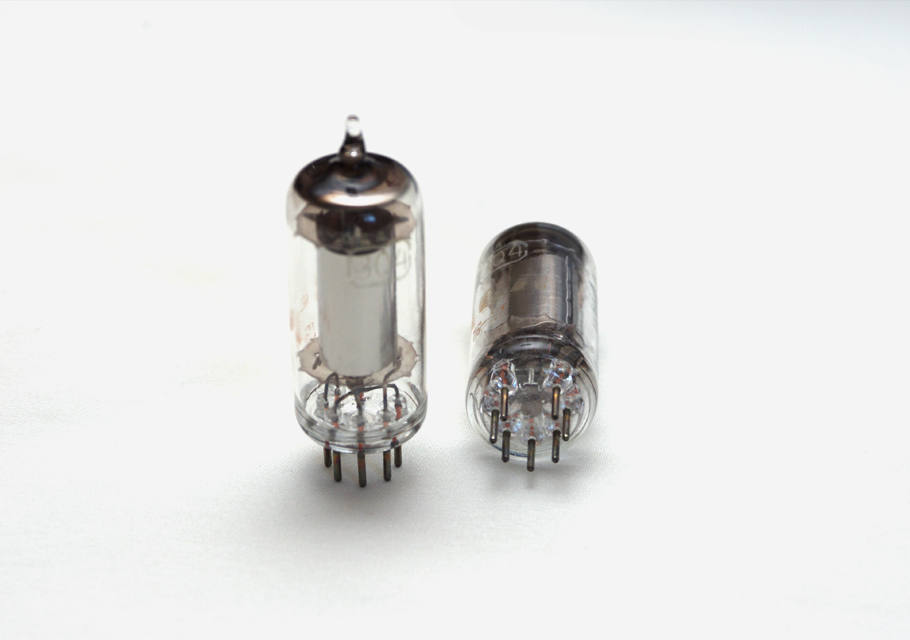
With all the dramatic progress, there is one thing we did not change. We adopted a directly heated tube – 3Q4 in Phantom. We are true believer in directly heated tube for their sensational audio performance of intimacy and lifelike sound stage more than none-filament type valves. Phantom with triode-connected 3Q4 immediately warms up into working condition, though it takes tens of minutes for optimum sound quality.
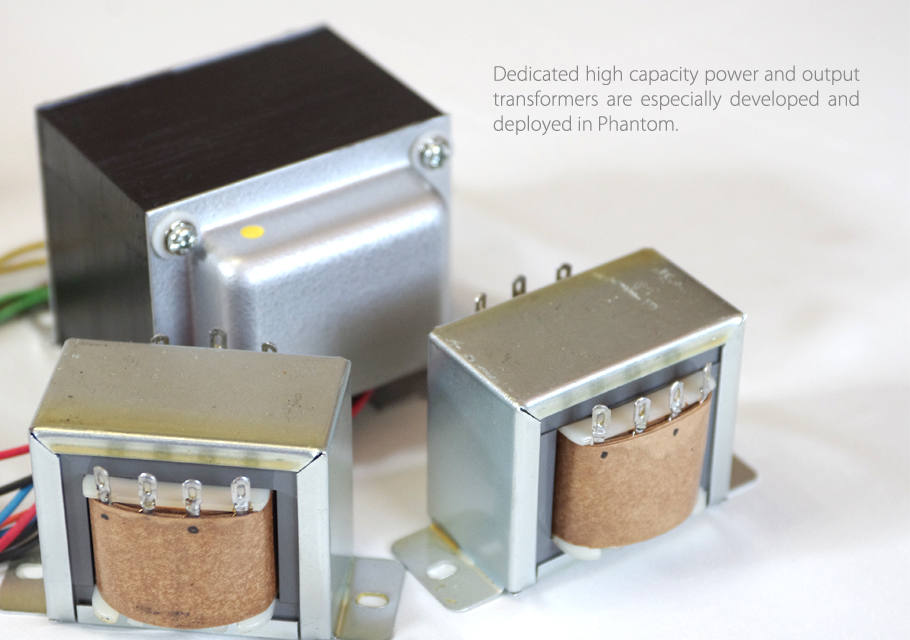
We are proud to say the single-ended output has equivalent performance as balanced output by leveraging output transformers in Phantom. There are many praises about Phantasy's audio quality and most are originated from its premium output transformers. Without exception, Phantom is integrated with high quality output transformers. Thanks to the roomy enclosure, we have plenty space to house high power iron cores without compromise. The model used in Phantom is newly developed especially for its output stages and driven by two amplifiers in a push-pull style to minimize distortion and noise.
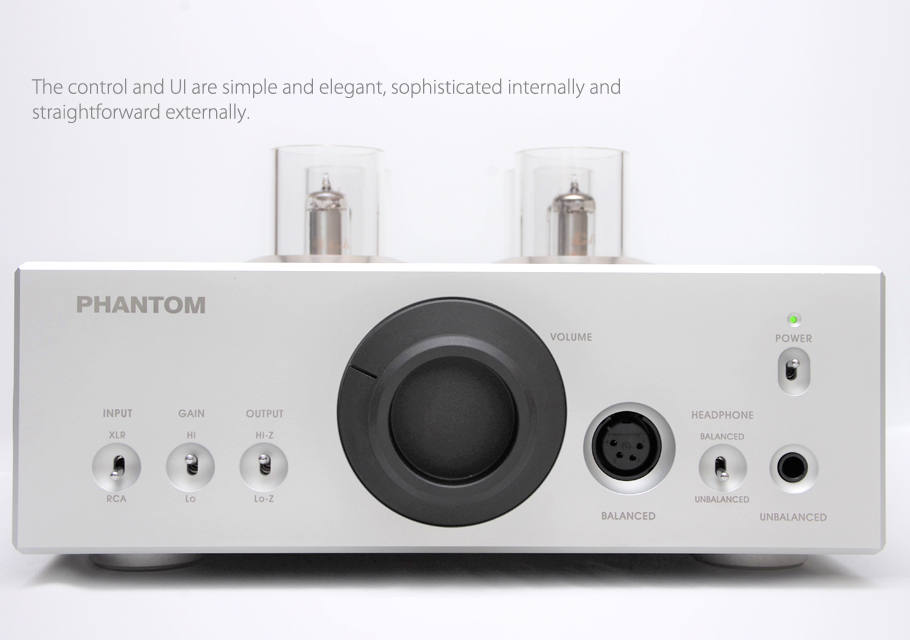
Critical music signals and outputs are routed through mechanical relays for highest purity. The relays used in Phantom is especially selected latch-type that means relay's coil does not consume current after switching. Without the coil current, we avoid the electrical field next to signal path. Though a latch-type relay needs much more complex control circuits, it is our exhausted efforts to minimize interference.
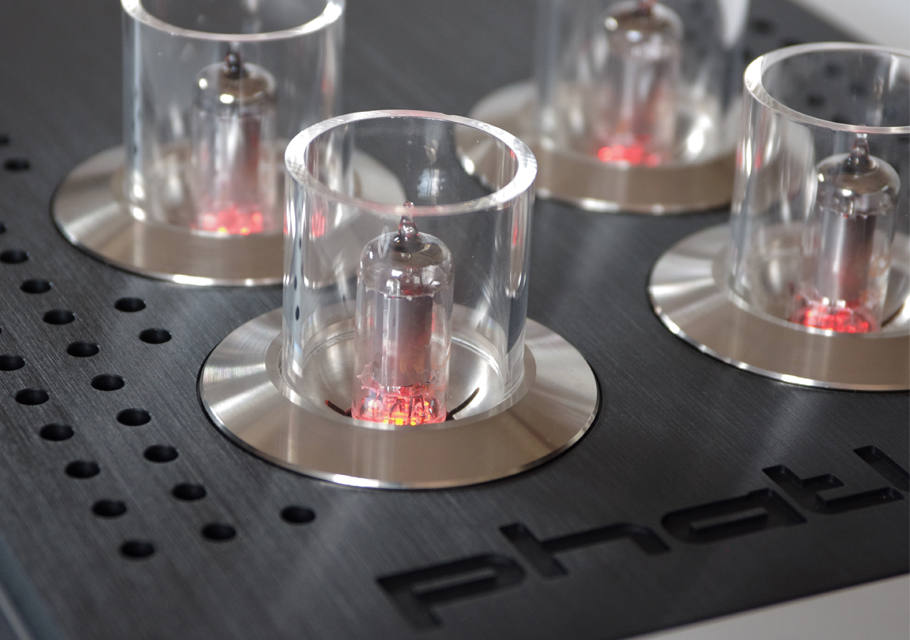
Starting from portable devices, power supply is always a high priority on our design approach. Thanks to the desktop setting, we have plenty of luxury on power block. The power transformer is rated over 80VA and built with top-rated iron core. Running at pure class-A, Phantom is consuming most power after power on. The quality is assured by its slightly warm even after days of operation.
There are 6 regulated power rails specific for each function block ranging from input buffer, volume control, digital control, filament supply, and B+ high voltage.
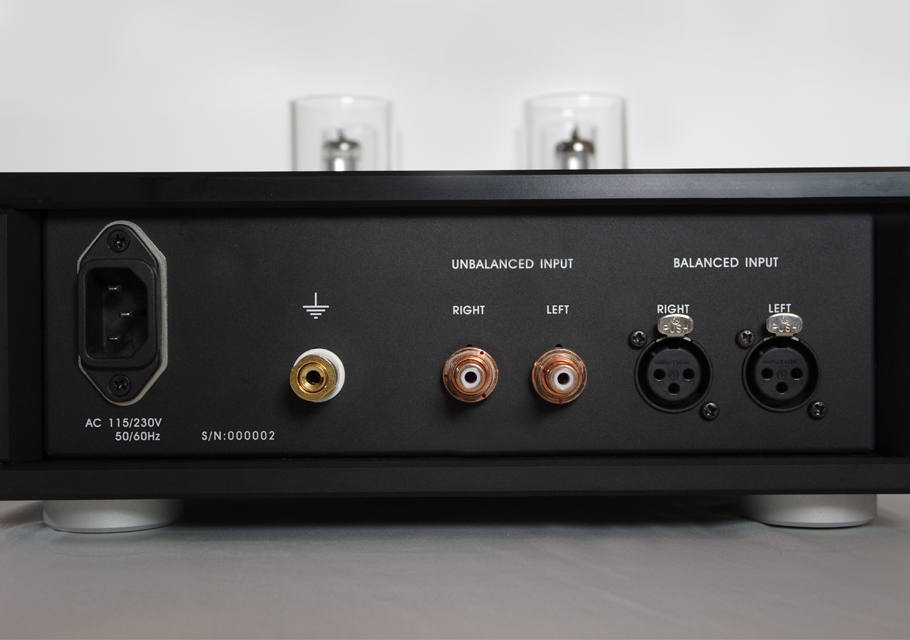
Phantom is another masterpiece designed by highly regarded ID and mechanical professionals. The enclosure ingeniously interlock through invisible tenons and notches is as solid as machined from a single brick to ensure best rigidity and precision. The marking is laser trimmed on. There is nothing shaky or loose. It is designed to last from ground up.
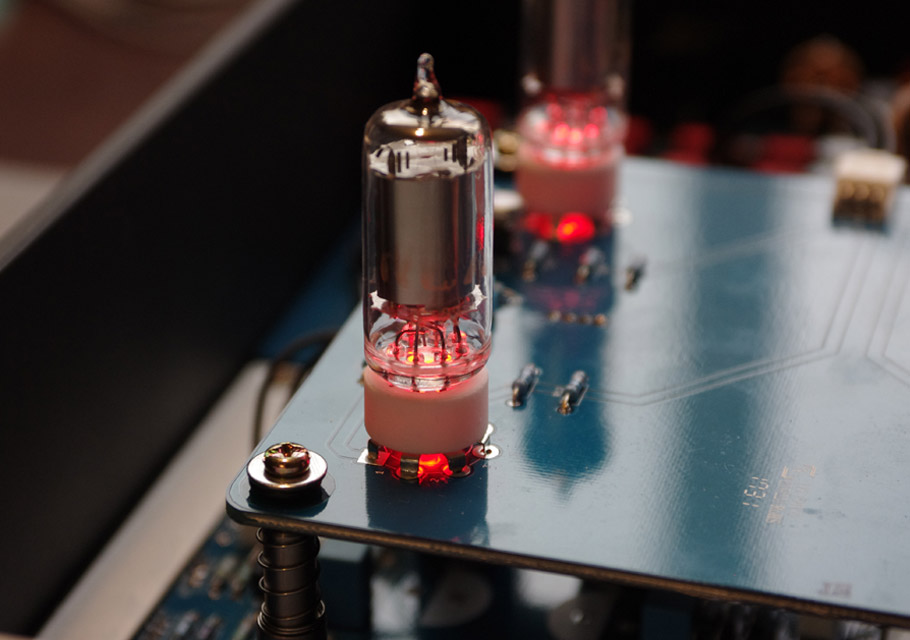
The listening experience is overwhelming and immersive. It is ultimately transparent with a warm touch. It drives headphone effortlessly and extends bandwidth well down to lowest octave and up to highest harmonics. The beloved music is presented with a familiar yet whole new face, they've rarely heard as natural or life-like as with Phantom.
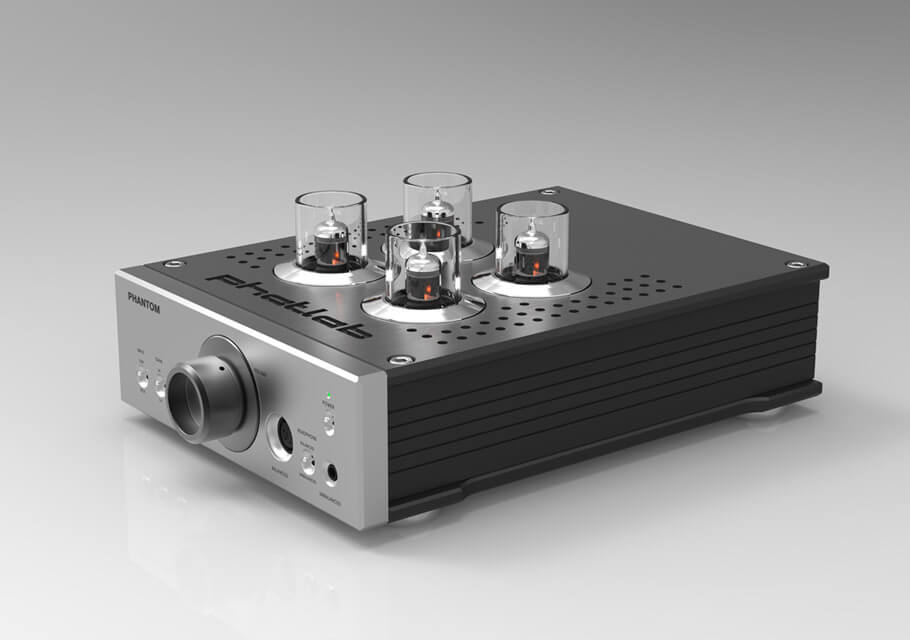
| Frequency Response |
5 Hz – 50 kHz (-3dB) |
| Output power |
2000 mW + 2000 mW (30 ohm) |
| Headphone impedance |
16 ohm – 600 ohm |
| Max. Input Voltage |
2V(RMS) |
| Inputs |
1 x RCA; 1 x XLR |
| Outputs |
1 x 1/4" TRS; 1 x 4-PIN XLR |
| Power supply |
AC 115/230 |
| Dimensions |
275 mm x 405 mm x 170 mm |

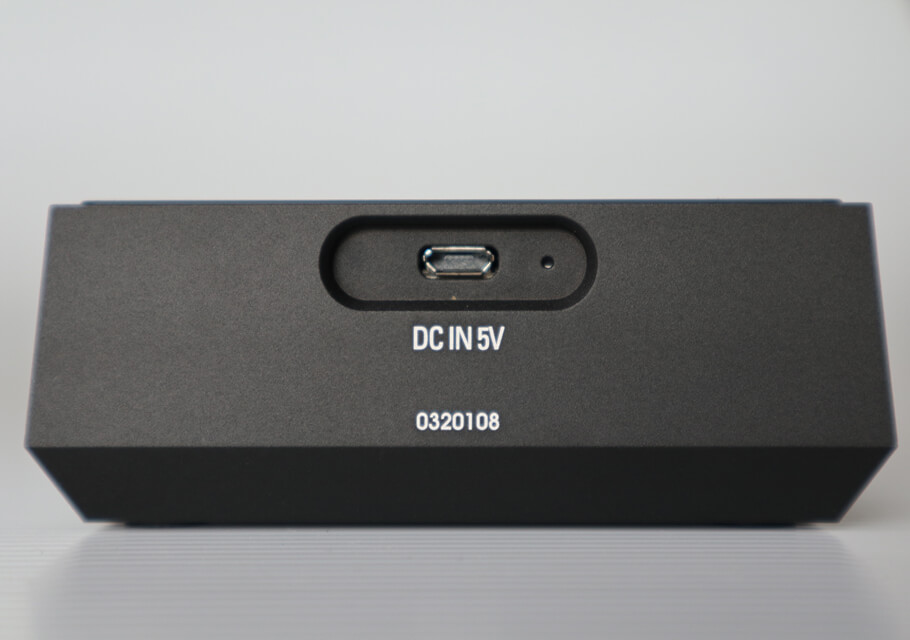
.4.4mm balanced and 3.5mm SE outputs
.Improved output transformers
.Double capacity power reservoir
.Super linear circuitry
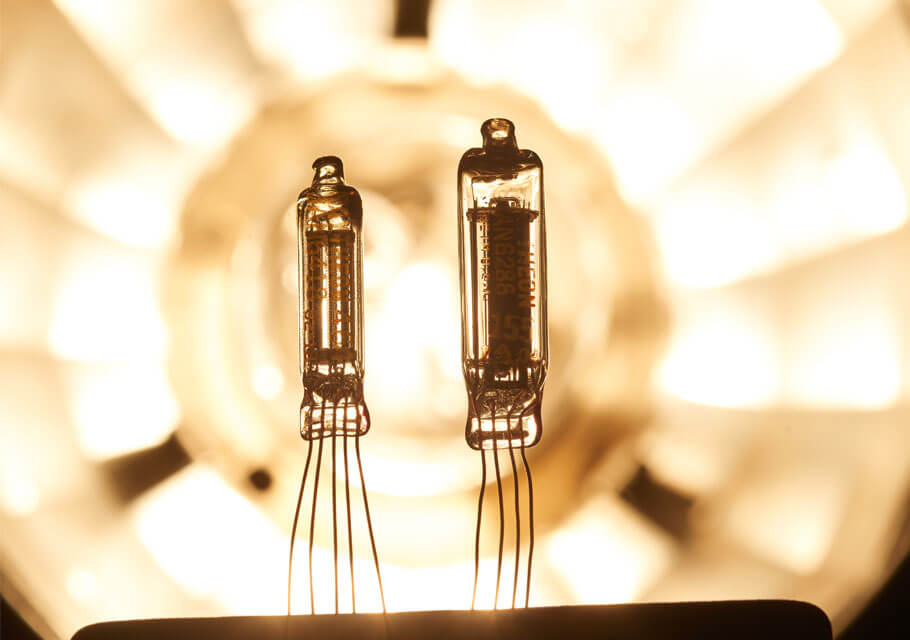
We proudly introduce PHAntasy II, the evolutionary version of original PHAntasy that is renowned for its unprecedentedly sensational sound quality in a portable chassis. Its novel single-ended topology and unique permalloy output transformers are crown jewels inside. Through innovation of PHAntasy, we have created generations of products with individual characteristics and advanced in amplifier technology. PHAntasy II is a fruitful achievement after years of development to preserve all the beauty of PHAntasy while meeting the expectation of audiophile society and progress in audio technology. PHAntasy II delivers more robust power and low level resolution without losing the touching tonality of directly heated triode. PHAntasy II is another masterpiece binding the tradition of Phatlab Audio to provide rich harmonics and full-bodied sound. Its achievement is easily manifested from the first note of music playback.
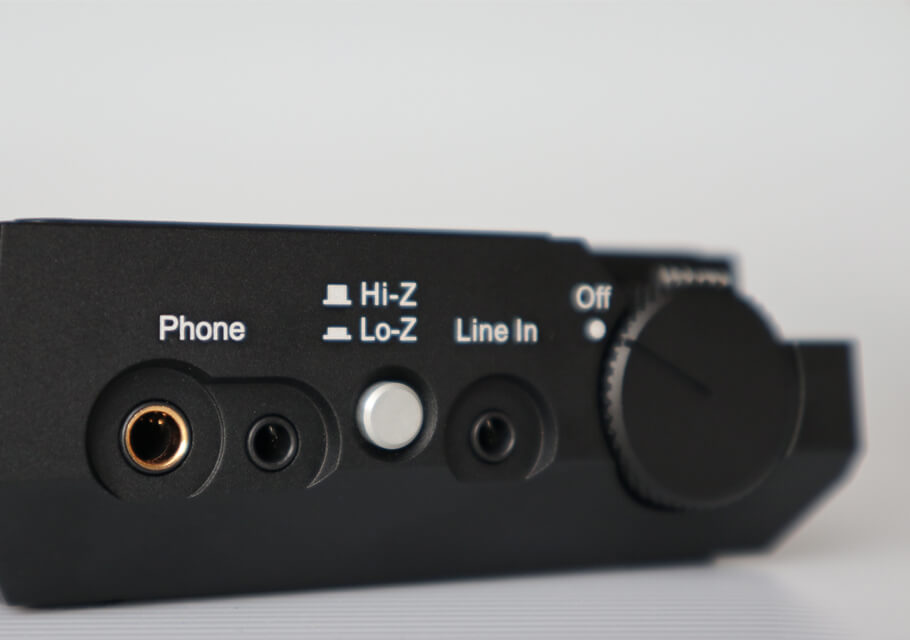
For tens of years, the specification of phone jack is steady, though there are proprietary terminals used by some manufacturers for balanced output. There is never a de-facto and reliable standard well accepted by the industry. Until the 4.4mm jack is released, we see a promising physical implementation that is reliable enough and well accepted as next generation phone jack. By applying the new balanced jack, PHAntasy can serve headphones with quality cable and minimum contact resistance to ensure robust output quality. In addition to 4.4mm balanced jack, a legacy 3.5mm single-ended output is provided for best convenience. While user is advised to use only one of the outputs at a time, it is to ensure the proper loading impedance in single-ended topology.
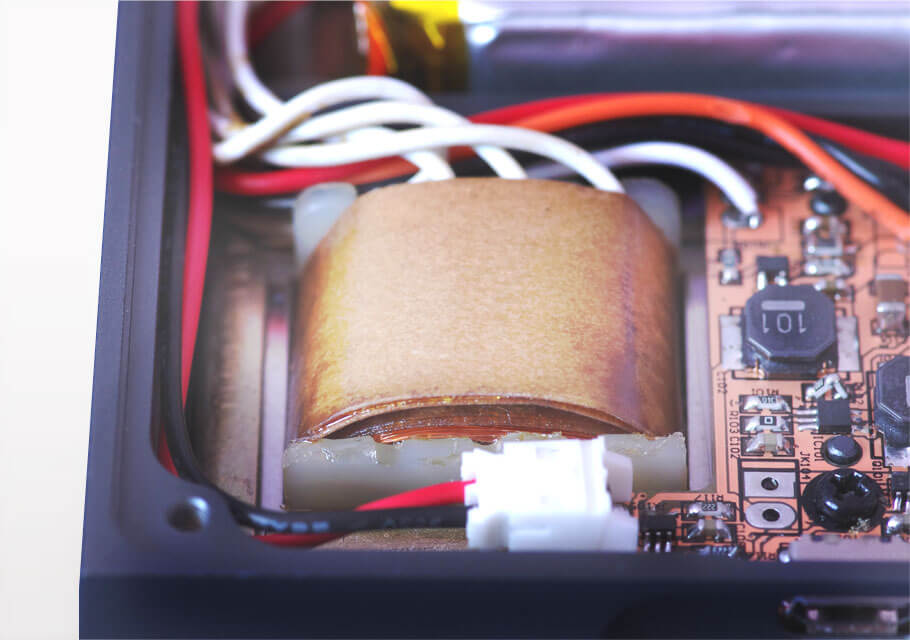
It is well known that output transformer is the spirit of single-ended amplifier. However, there are challenges to design transformers for small portable chassis. For example, the high wiring resistance is one of biggest challenges. The resistance is in series with headphone and consumes output power. It lowers the effective power into headphone. In PHAntasy II, we struggle to increase the wire gauge and reduce over 20% in-series resistance.
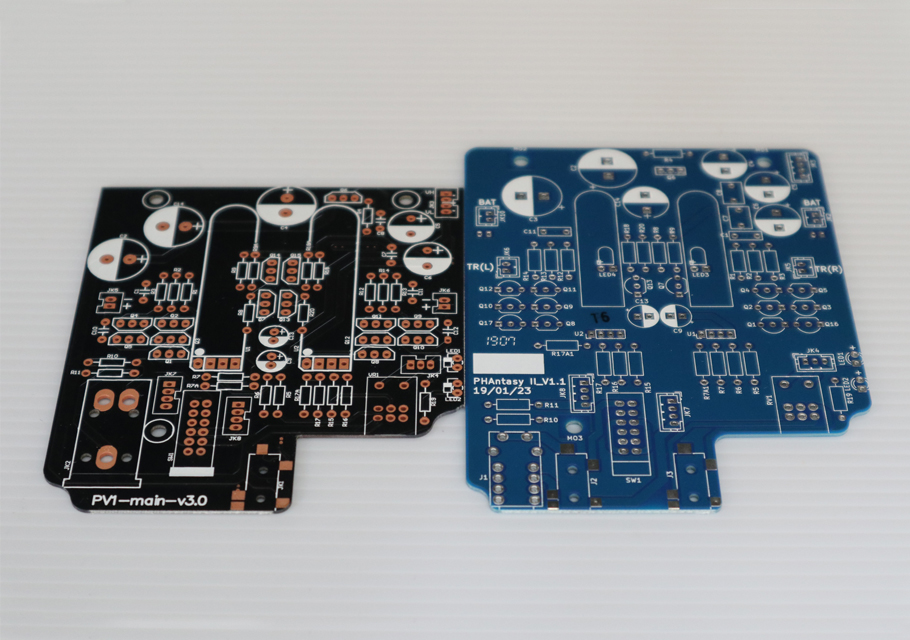
The sensational performance of vacuum tube might be rooted in its higher 2nd harmonics output, while excessive mix-up of harmonics from different stages will muddy the sound. By leveraging the development of Phantom, we are aware of the lower distortion from surrounding circuitry will faithfully preserve the resolution and liveliness of music without losing the magic of tube sound. By applying the same super linear topology, the performance of PHAntasy II is manifested in its purer music presentation.
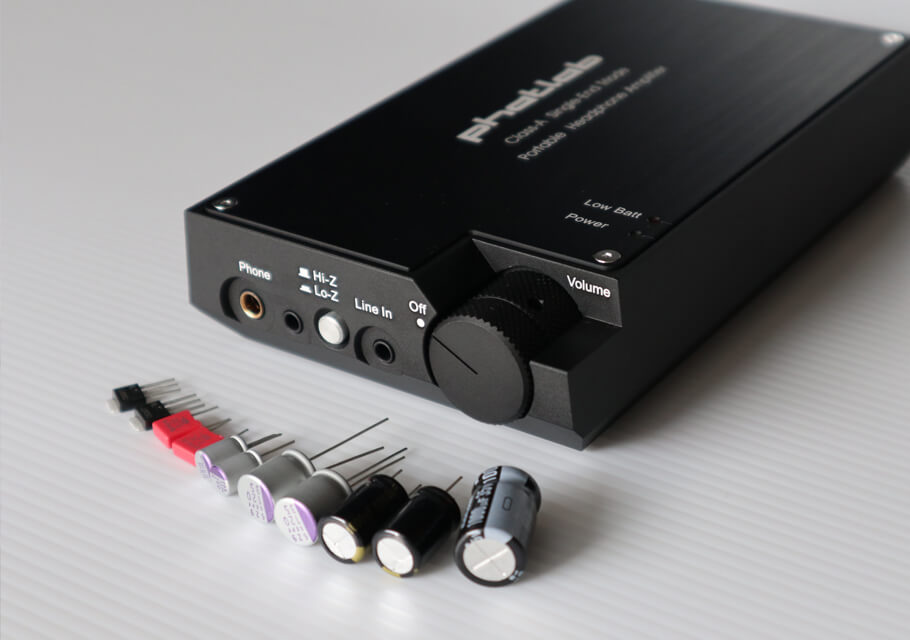
We are not talking about the battery capacity because 8-hour operation time is satisfactory to most users. It is the immediate capacitance right before amplifier's high rail. It is critical to have plenty of power capacity for a class-A amplifier. In PHAntasy II, we rearrange the components placement to increase the board space for housing more capacitance and revisit physical PCB layout to further minimize impedance and increase effective capacitance.
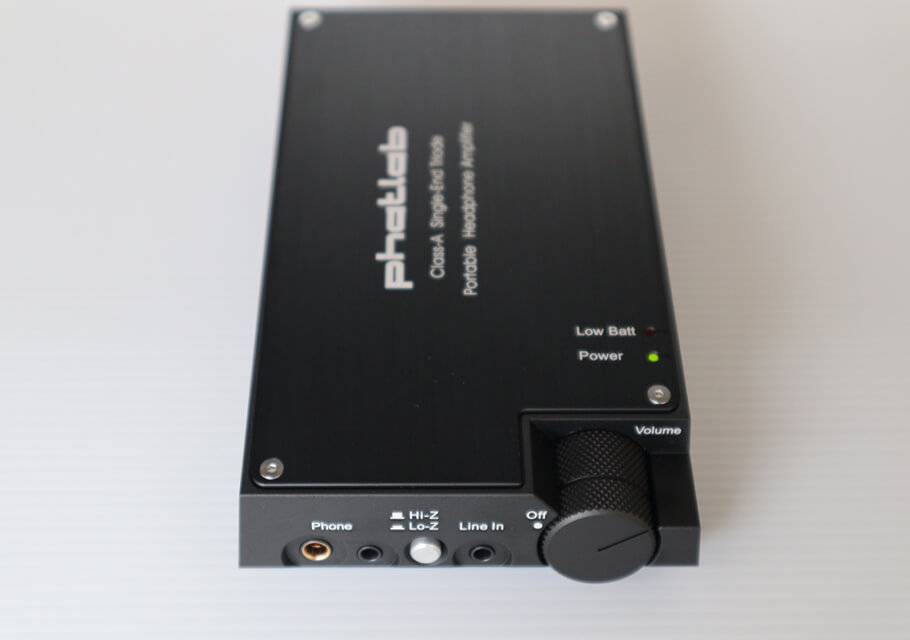
There is always a question on how to compare PHAntasy II with original one in every aspect. The truth is we have done our best to improve PHAntasy II's performance physically. But audio playback is always more than engineering or physical superiority, it takes human touch and sense to be sensational. The faster transient response and more powerful punch in PHAntasy II might compromise a little bit in tenderness. PHAntasy II is nonetheless inherits the tradition of Phatlab Audio. It is easily manifested itself in the first tone in audition.
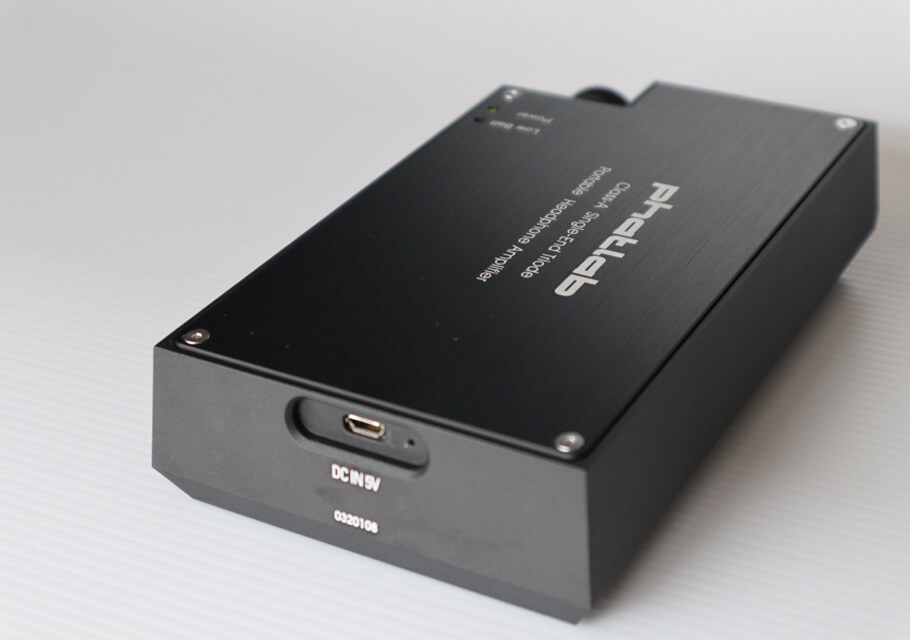
| Frequency Response |
30 Hz – 40 kHz (-3dB) |
| Output power |
250 mW + 250 mW (300 ohm) |
| Headphone impedance |
30 ohm – 600 ohm |
| Power supply |
5V/1A via micro B USB port |
| Operation time (on battery) |
Approx. 8 hours (2 x 1400mAh) |
| Charging time (>1A supply) |
Approx. 4 hours |
| Dimensions |
165 mm x 95 mm x 35 mm |
| Net weight |
745 gram |

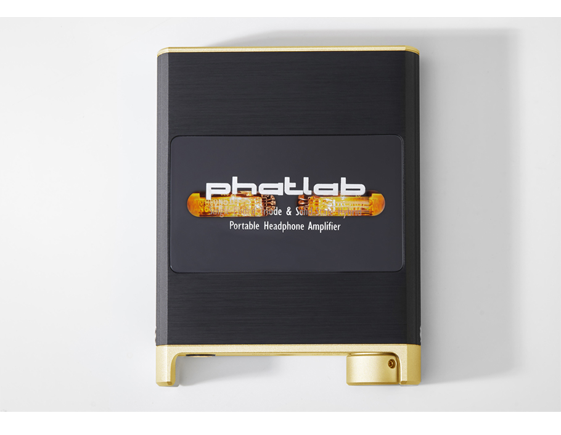
Ever since the 2015 debut of Sassy, everyone was astonished by its energetic performance accompanied by rich and warm sound of valves. Sassy handles most planar magnetic and high impedance headphones by its uniquely designed tensionless hybrid topology. In extreme cases, Sassy may deplete its fuel due to compact power reservoir (electrical capacitance) and low biased output stage. During the development of Sassy II, we have come up with a derivative proposal to exploit the extreme potential of Sassy hybrid topology. Sassy GT is the result.
Without changing the basic topology and compactness, we revisited the design to find out the power delivery bottleneck in extreme cases. The study concluded that the two most effective factors are:
• Power reservoir, equivalent electrical capacitance, which holds the energy for instantaneous demand during highly dynamic music passages.
• Thermal stability of output stage after increasing the static biased current.
The power reservoir is doubled in Sassy GT and the output stage is covered with a thermal pad to facilitate thermal spreading and to reach thermal equilibrium. These implementations ensure dynamic performance and long term reliability. Besides the component upgrades, the vacuum tubes, JAN6418, are hand-selected among hundreds of tubes from the same batch based on the requirement of high current gain to match the newly specified high power operating point. Only 10% of tubes can pass the strict criteria.
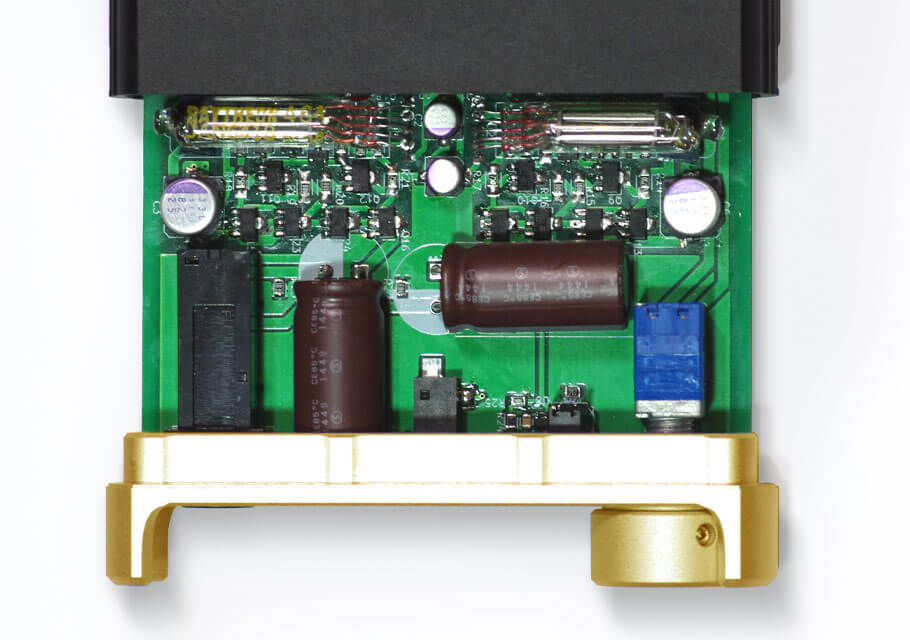
Just like Gran Turismo vehicle, Sassy GT consumes more power for higher driving capability. A simple comparison is; if Sassy II can run 10 hours on battery, then Sassy GT will run for 6 to 7 hours. Additionally, Sassy GT has a 3dB gain over Sassy ll. We recommend Sassy GT for audiophiles who own extremely low sensitivity headphones that demand the most from the companion amplifier.
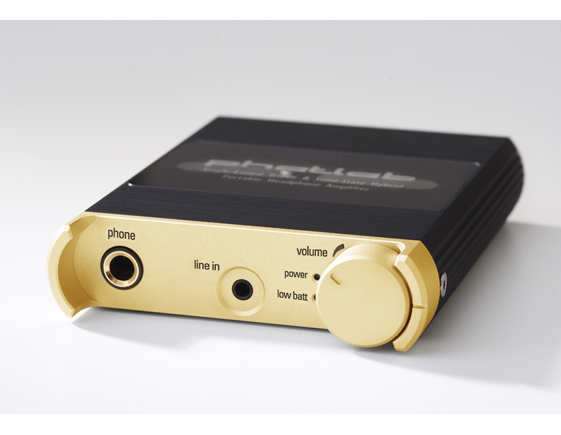
| Frequency Response |
10 Hz – 100 kHz |
| Output power |
180 mW + 180 mW (300 ohm) |
| Headphone impedance |
30 ohm – 600 ohm |
| Gain Switch |
High: 0dB / Low: -10dB |
| Power supply |
5V/1A via micro USB port |
| Operation time (on battery) |
Approx. 6 hours (depends on headphone impedance) |
| Charging time (>1A supply) |
Approx. 3 hours |
| Dimensions |
119 mm x 93 mm x 23 mm |
|
Net weight |
285 gram |
























PHAntasy is faithfully binding to the original spirit of SET (single-ended Triode) amplifier. The whole machine is working in pure class-A state and the output transformer is designed with taps for impedance match and handcrafted by highly experienced manufacturer. User can easily indulge himself in the traditional SET amplifier’s sensational performance. On the other hand, Sassy brings in more energetic performance and extensive bandwidth on both ends at a more straightforward and a few less sentimental styles.
Both are phenomenal products and rare to find equivalent on the market, especially when considering their portability and extensive battery life. However, if you consider yourself as hardcore SET audiophile, then PHAntasy might be your only choice. On the other hand, if you prefer extensive bandwidth on music playback, Sassy is the one.
The tubes used in Phatlab’s amplifiers are military grade featuring extreme long life and ruggedness. Considering their original design target and verification, they are expected to last for over 5 to 10 years under normal usage. Besides, the tubes used in our amplifiers are 100% selected for noise and electrical parameters specific for performance in audio amplification that further guarantee its quality.
It is called microphonics, a specific noise induced by vibration of vacuum tubes. It is highly recommended to turn off the amplifier before connecting phone jacks. Since tube is electrical device built on mechanical structure, any vibration of internal electrodes will induced electrical noise. Though the tubes is well damped and the chassis is highly rigid to avoid excessive vibration, a direct plug or unplug of phone connectors is inevitable pose a shock to the tubes and follow-up noise.

